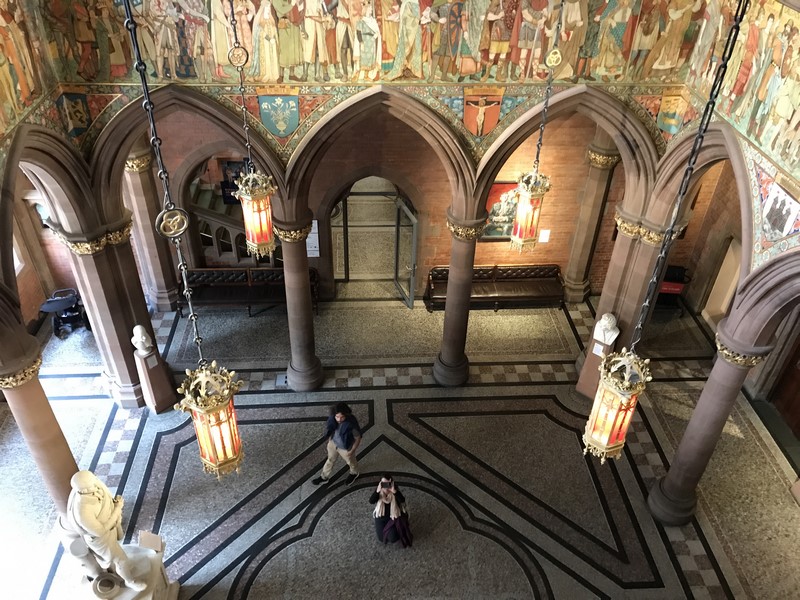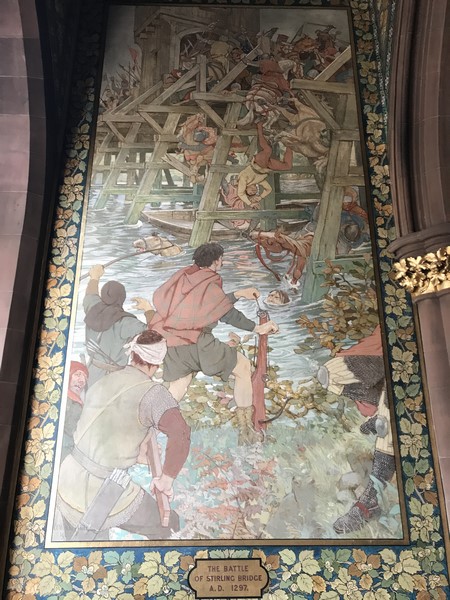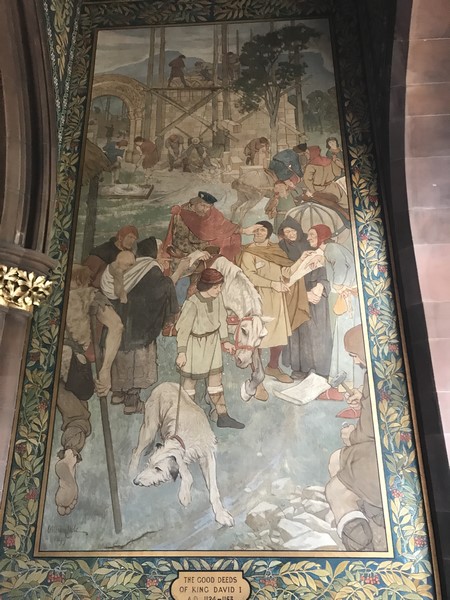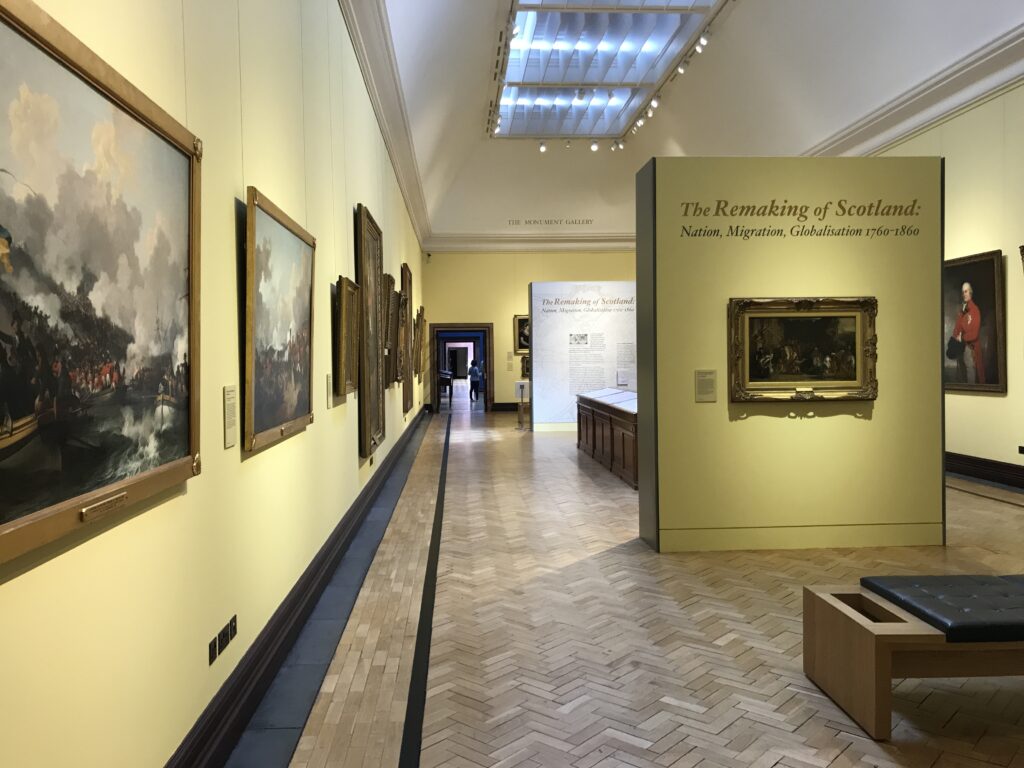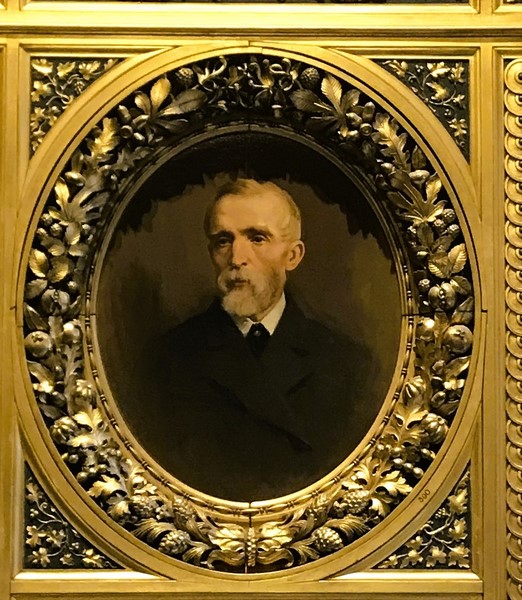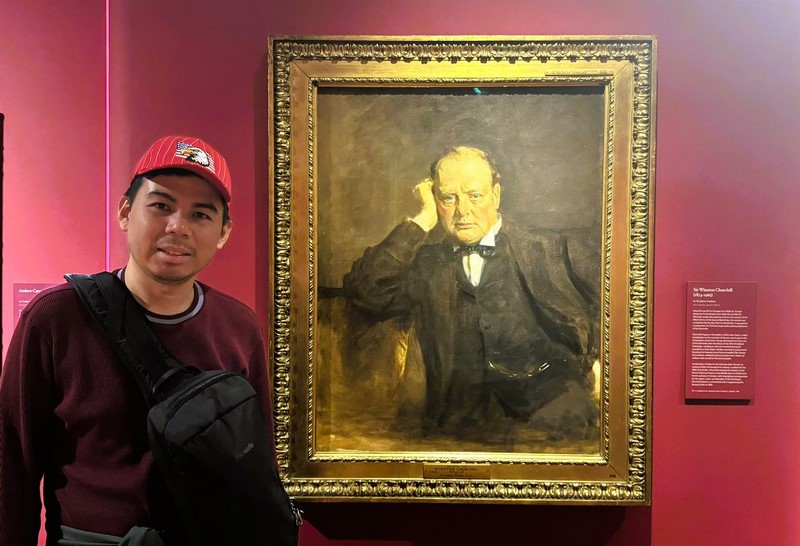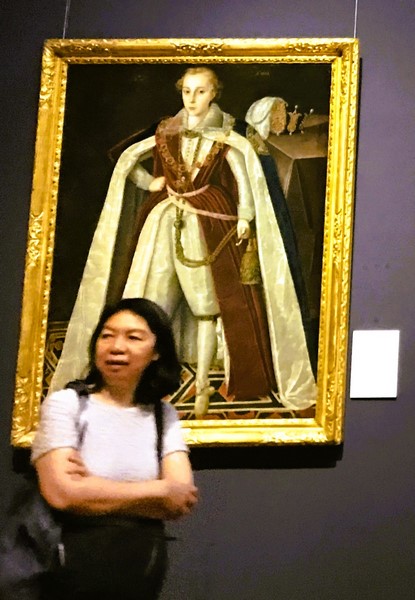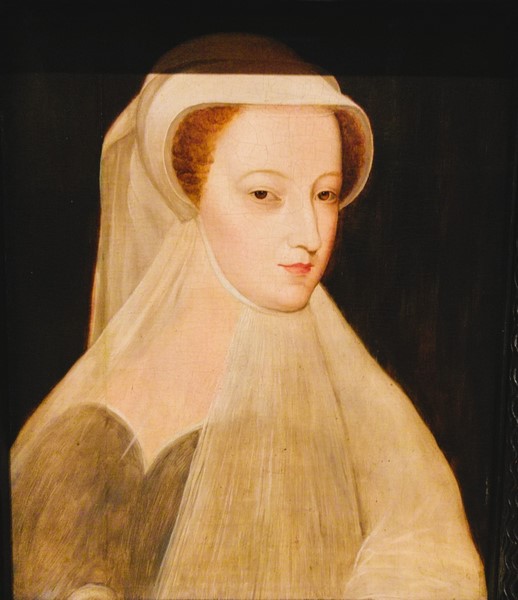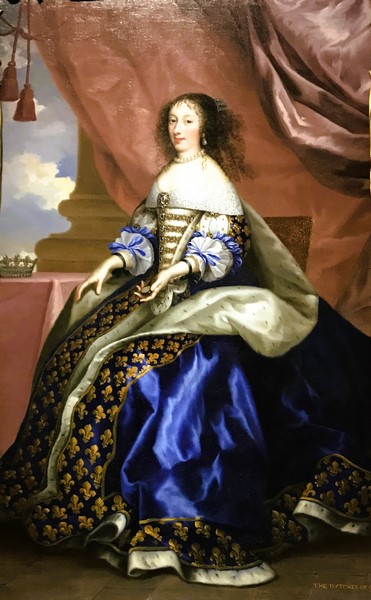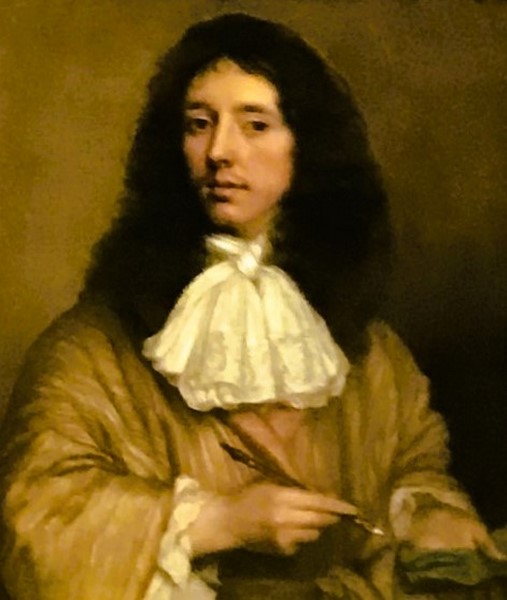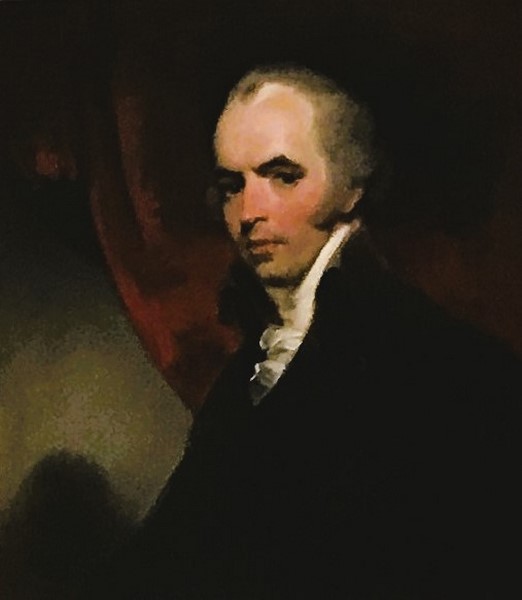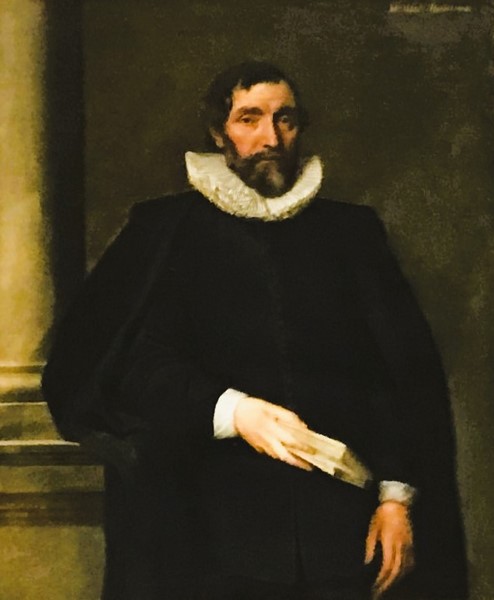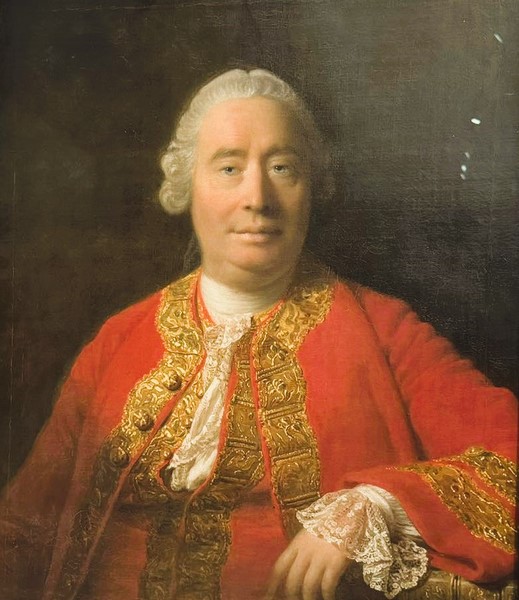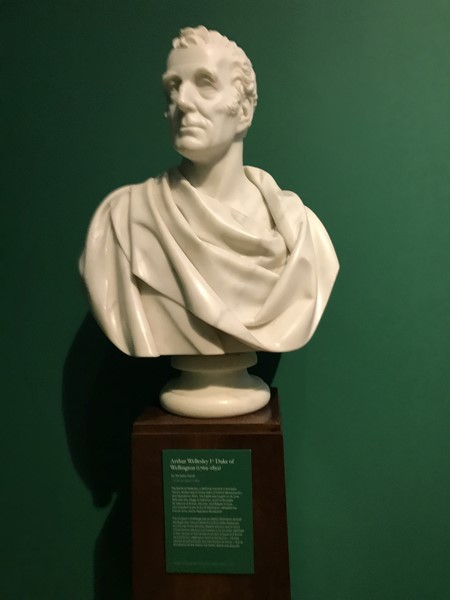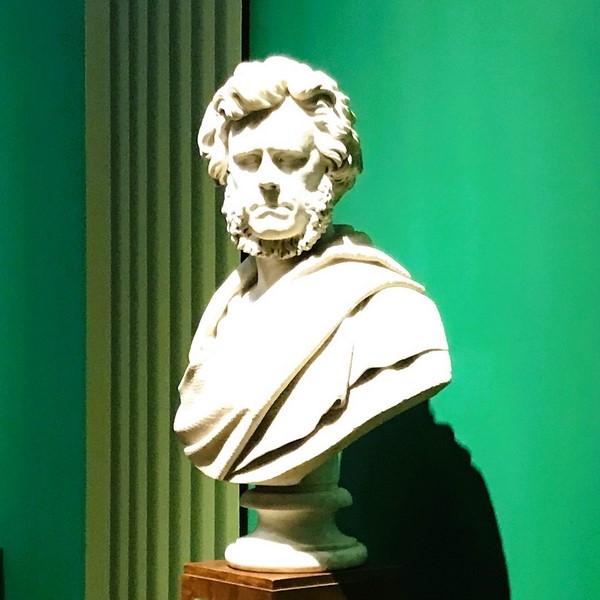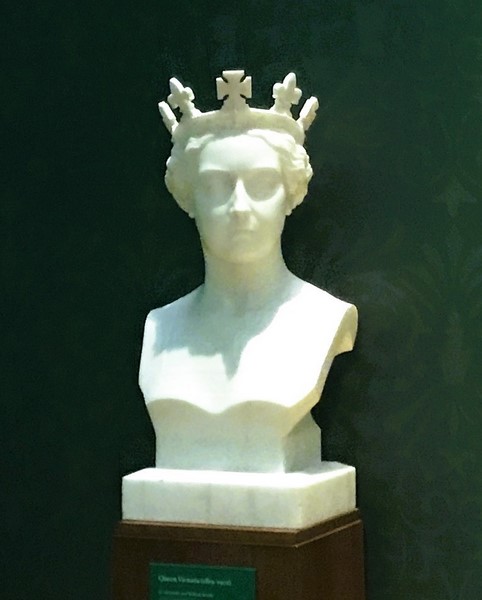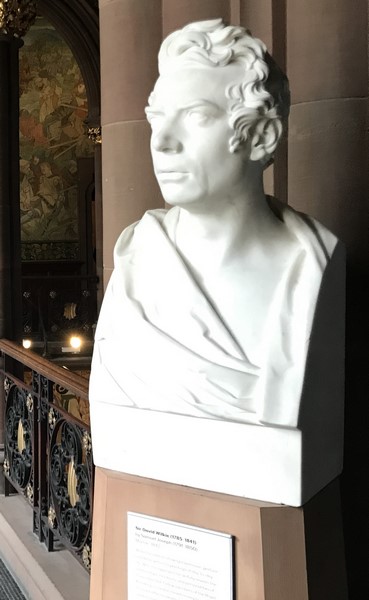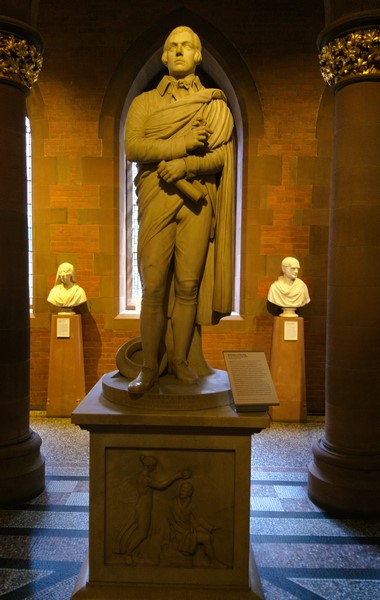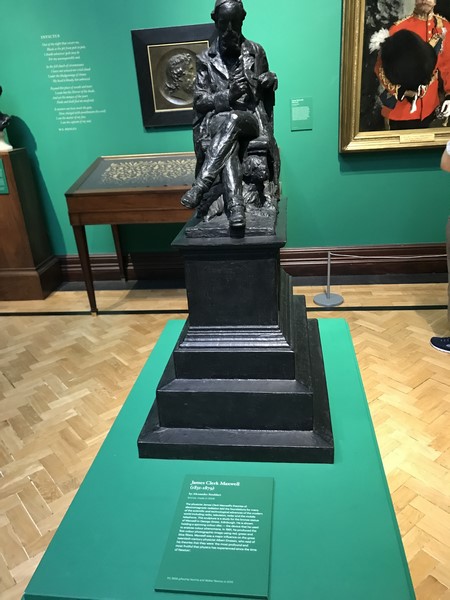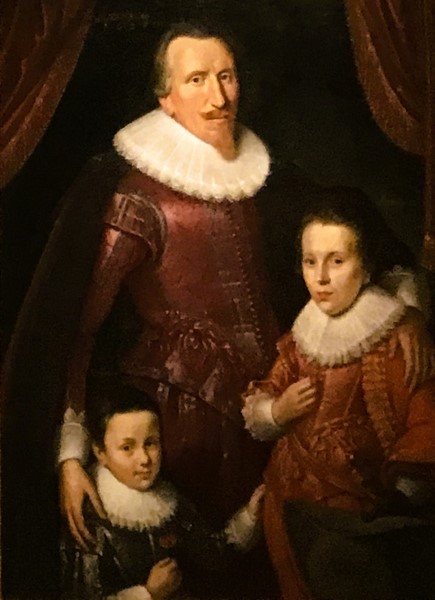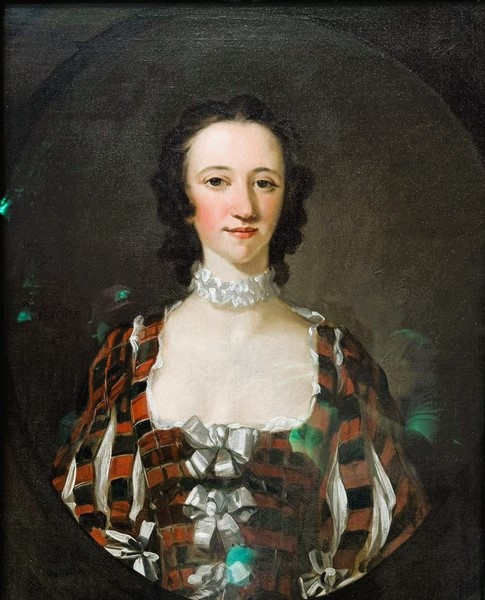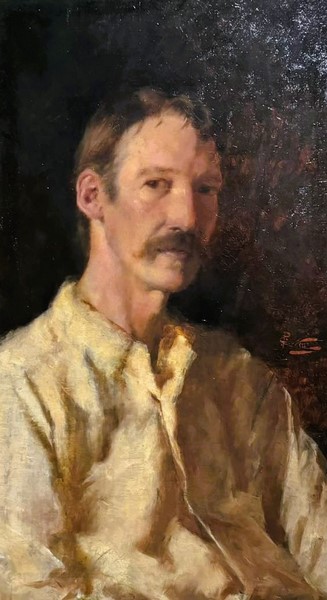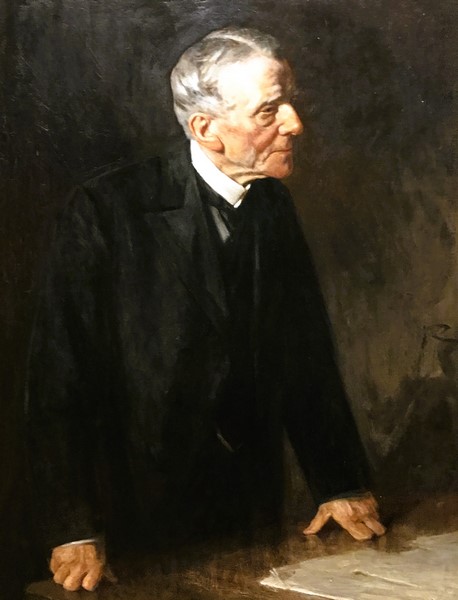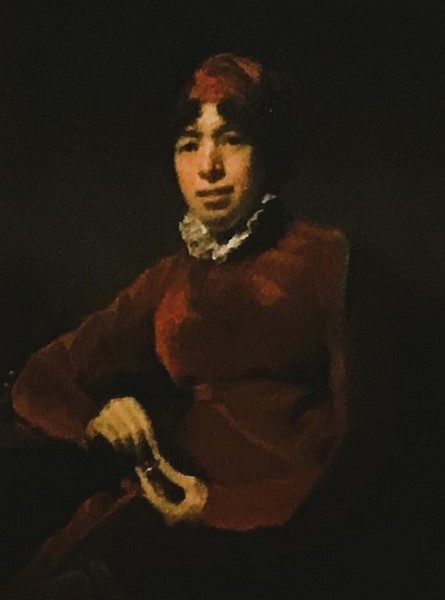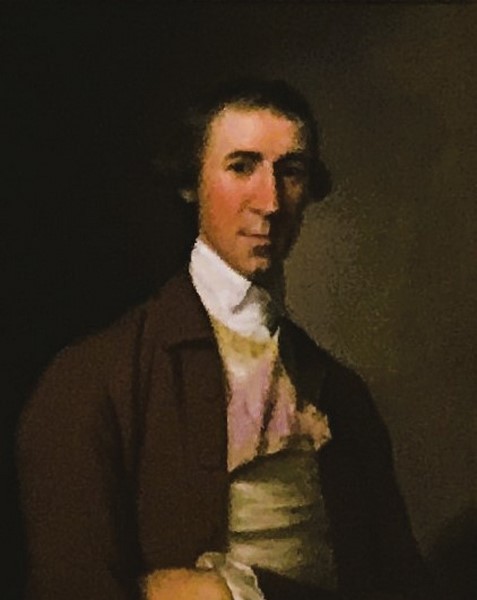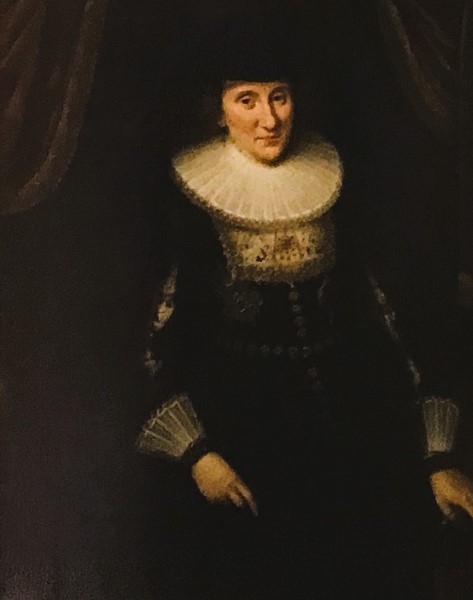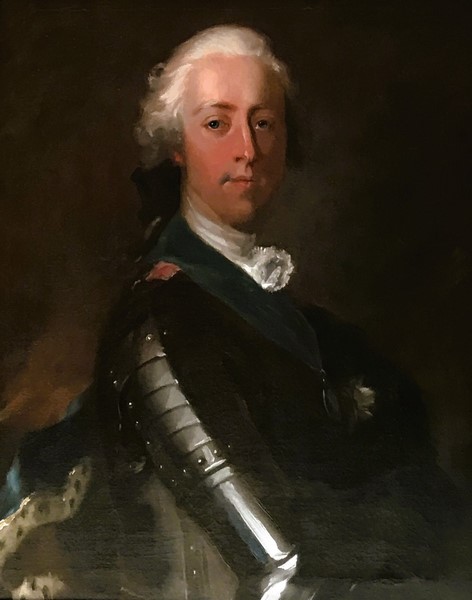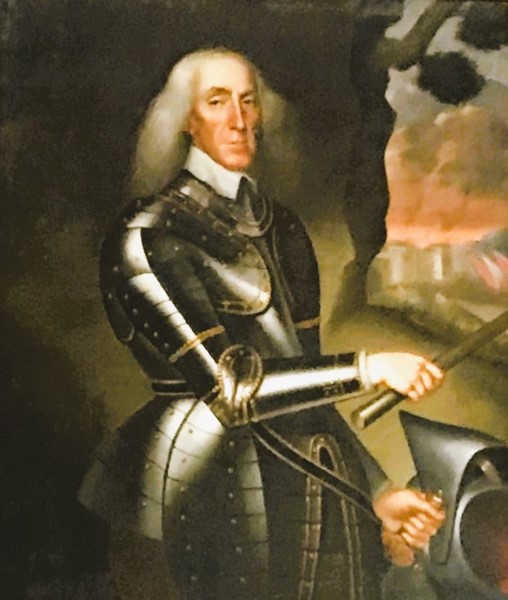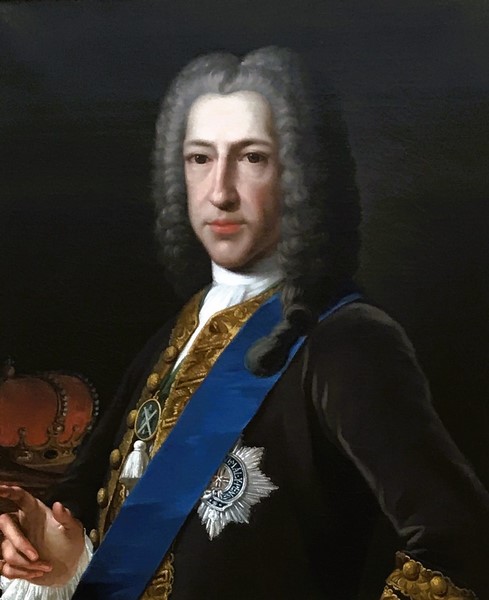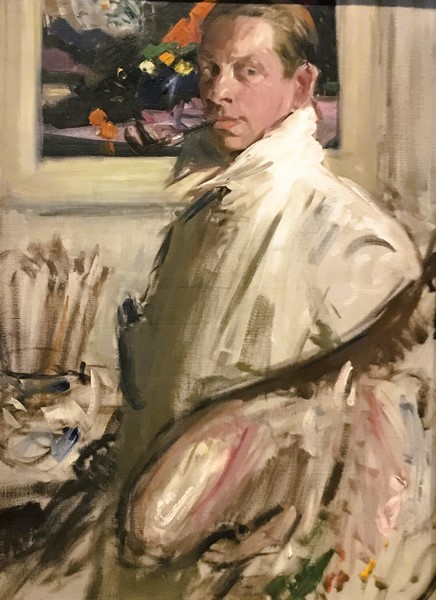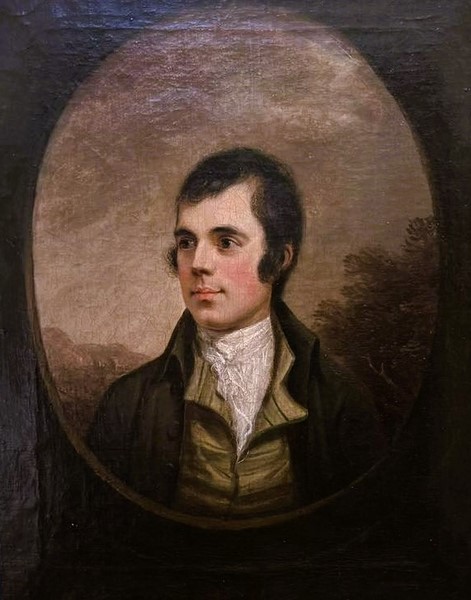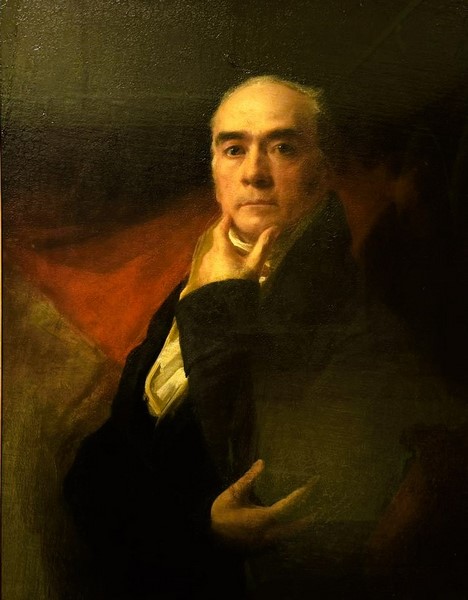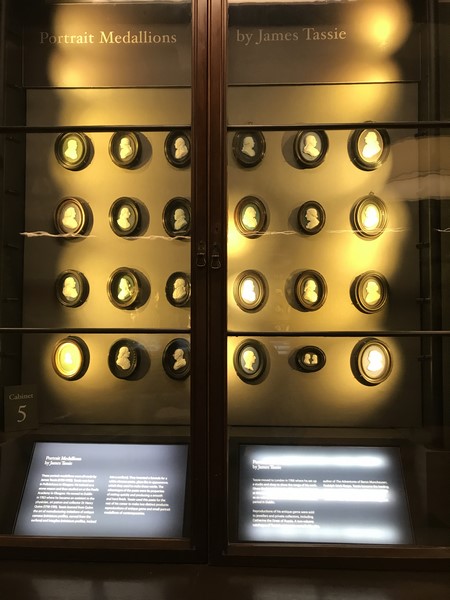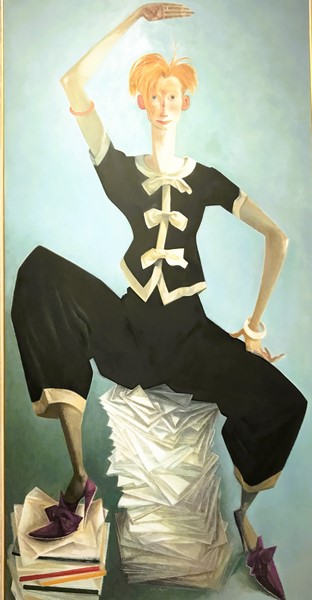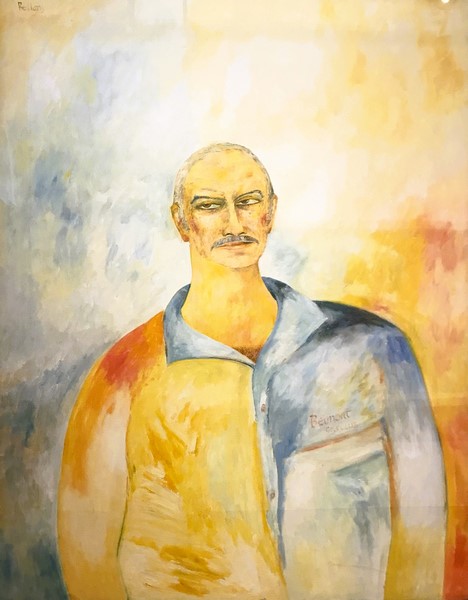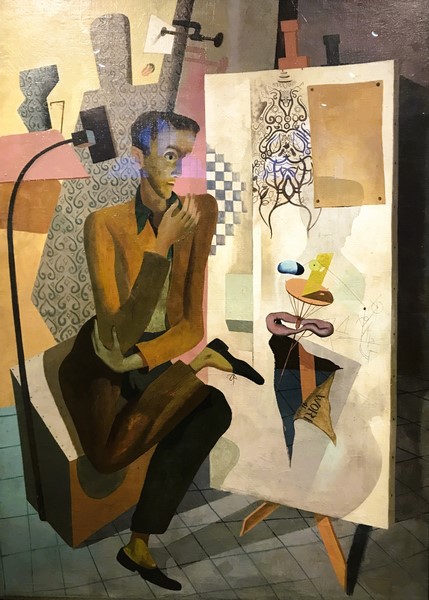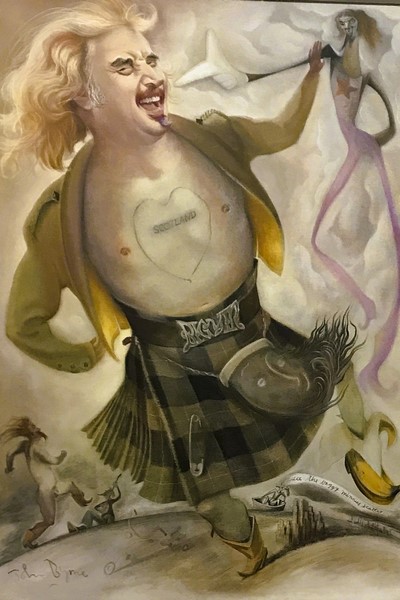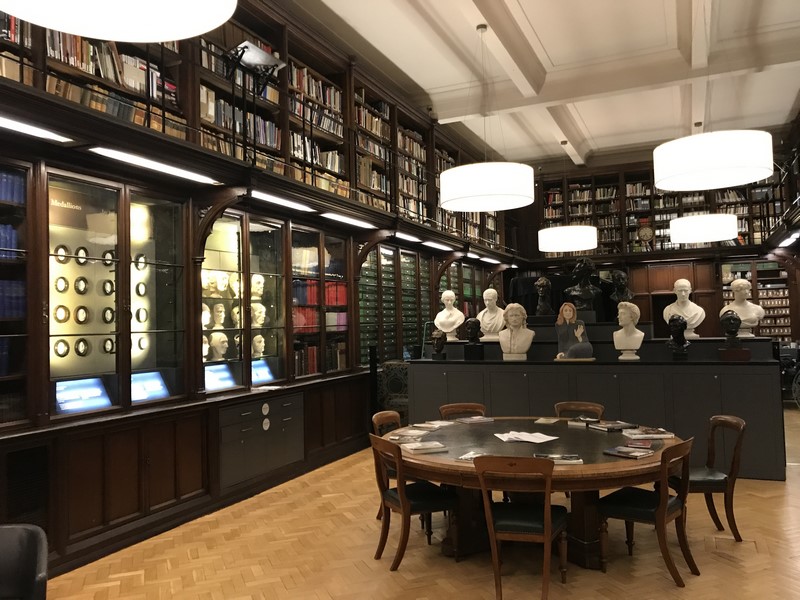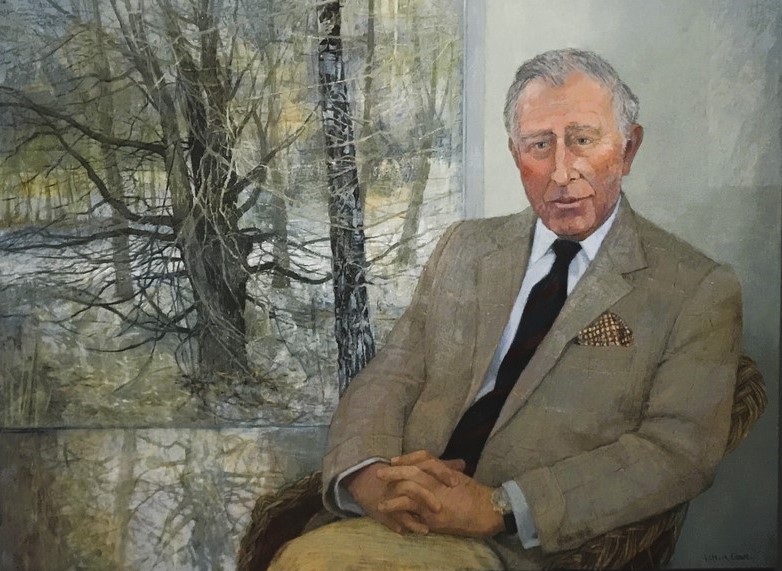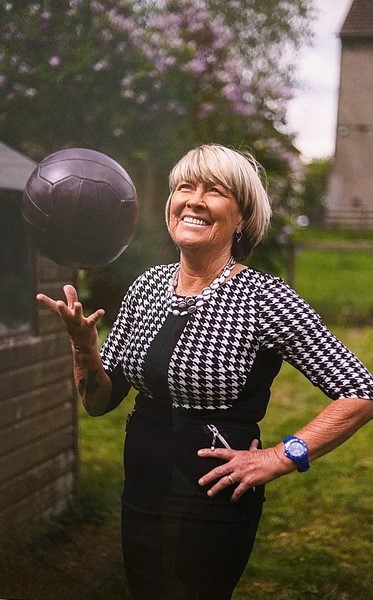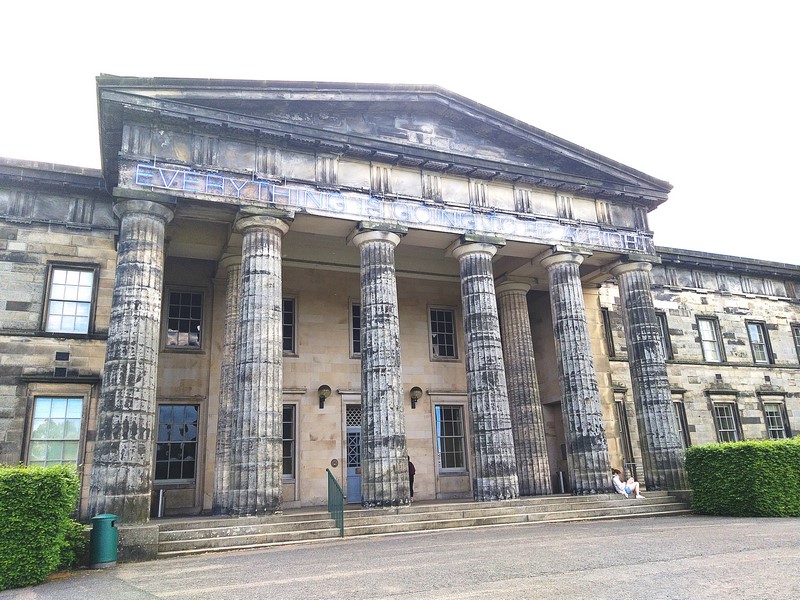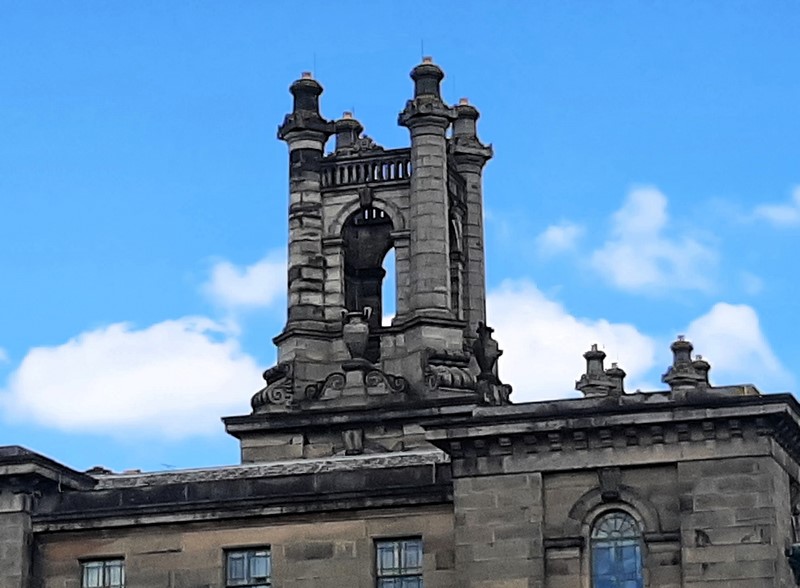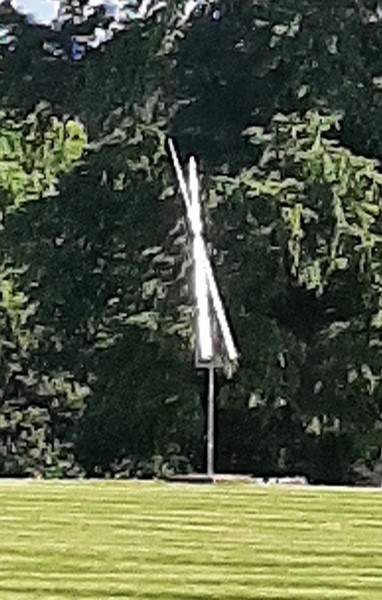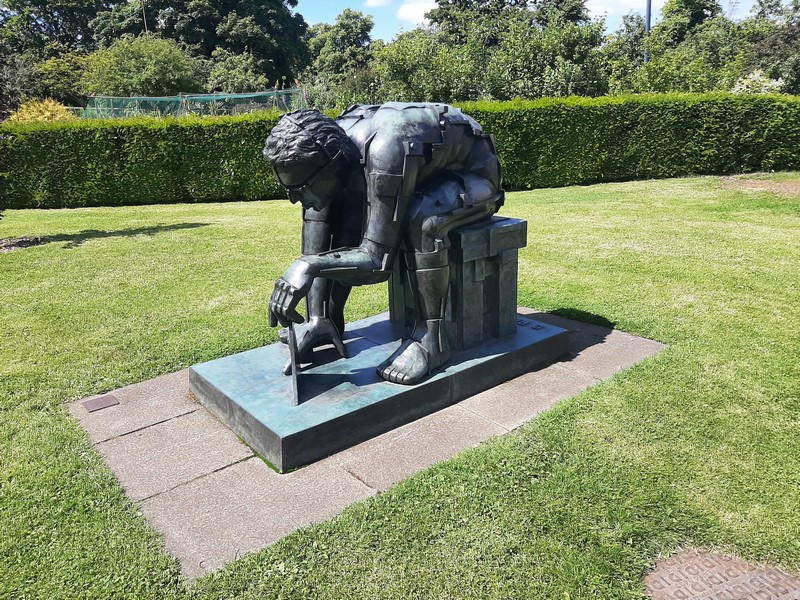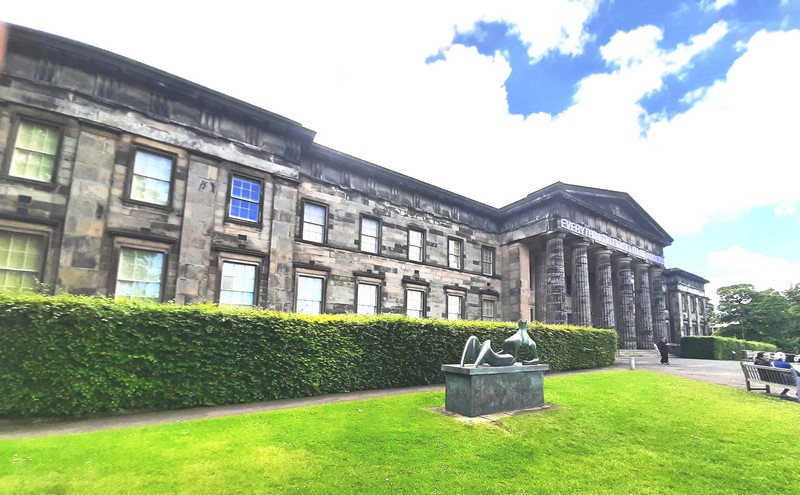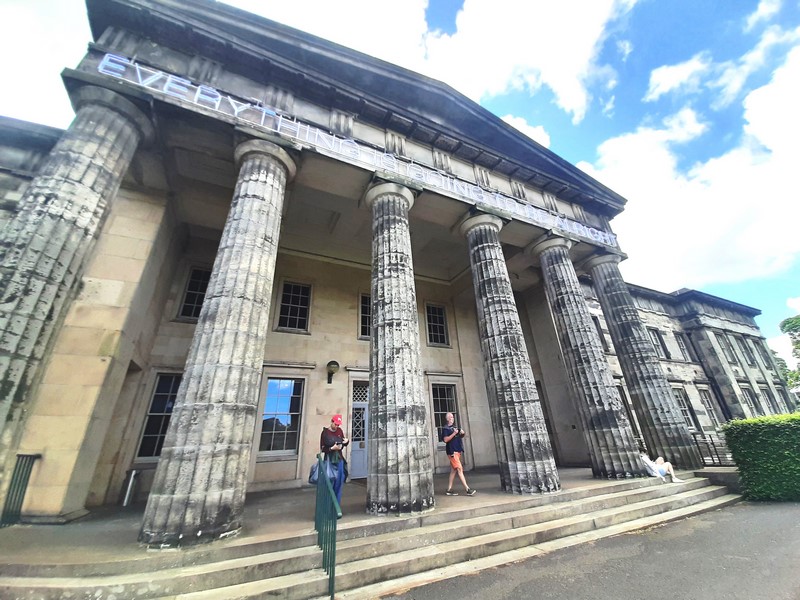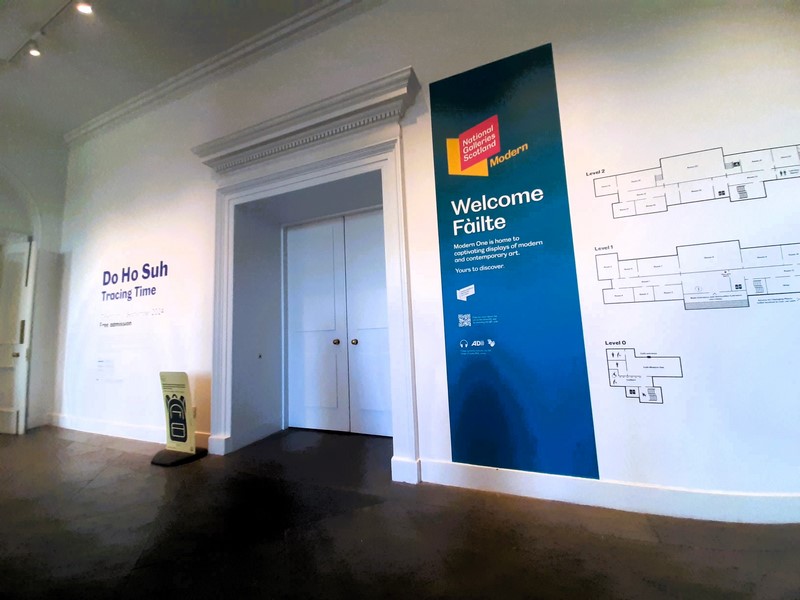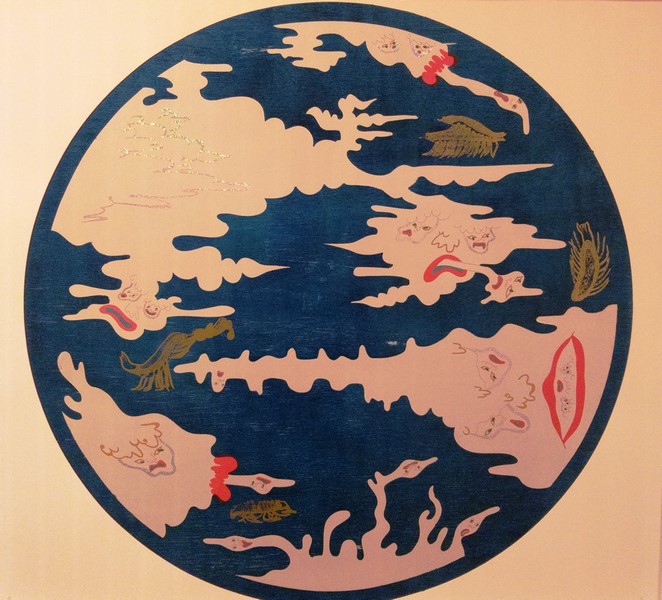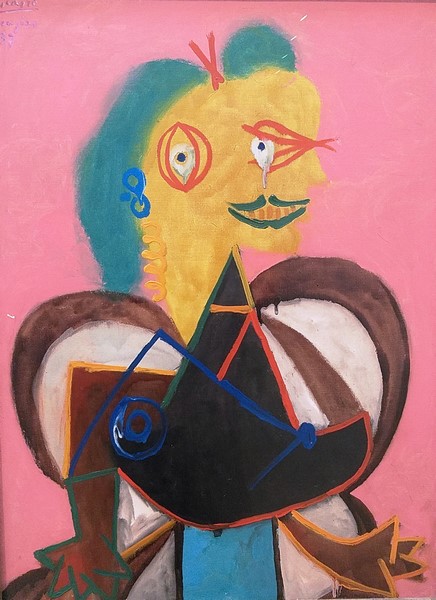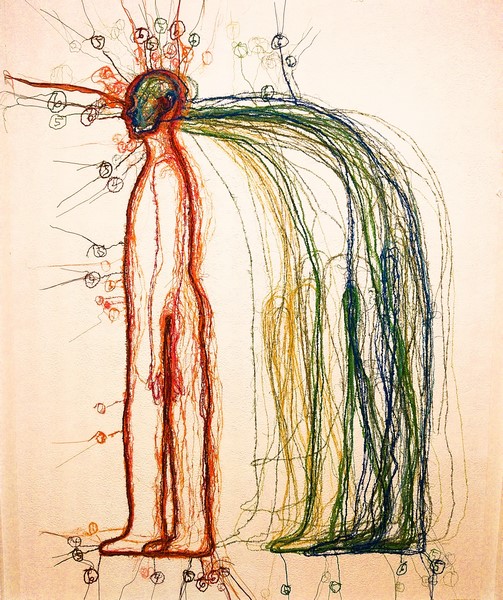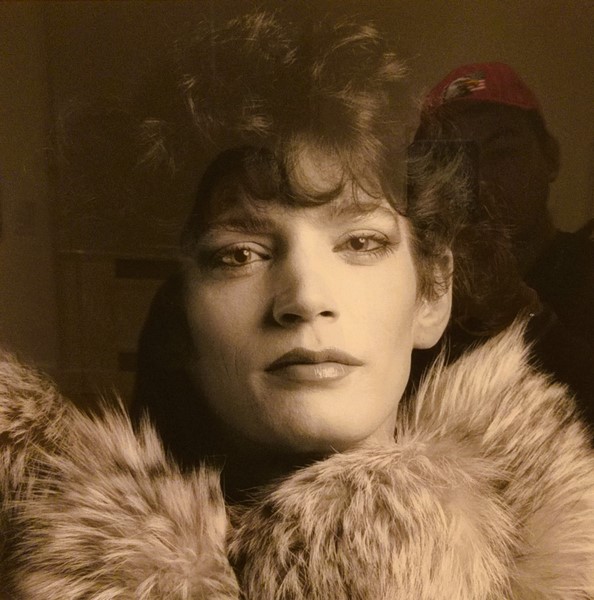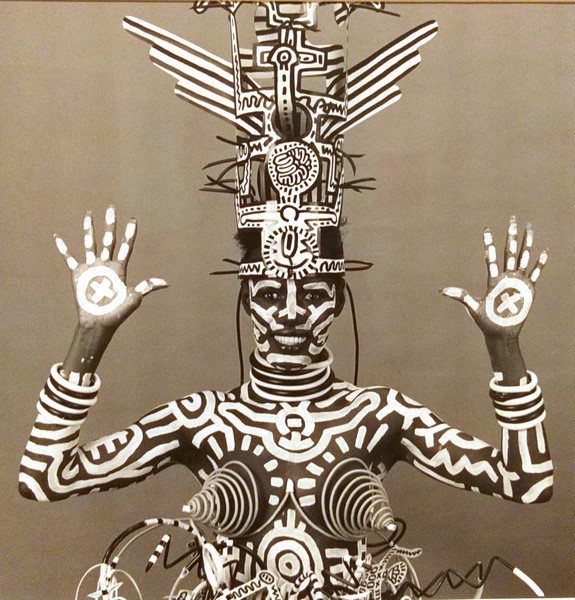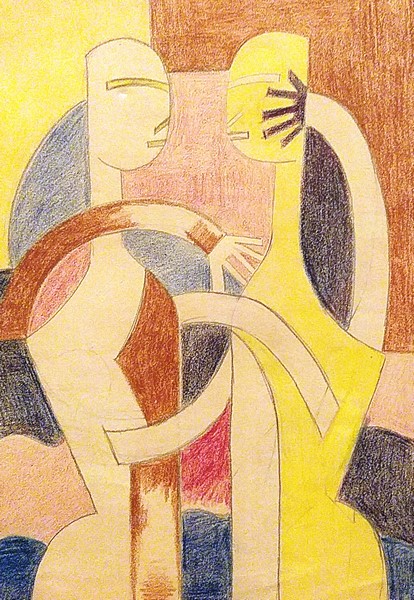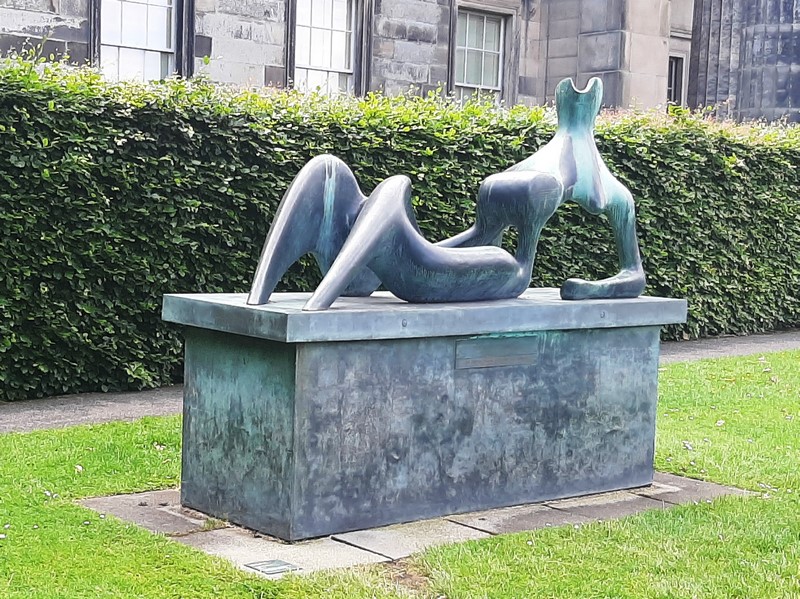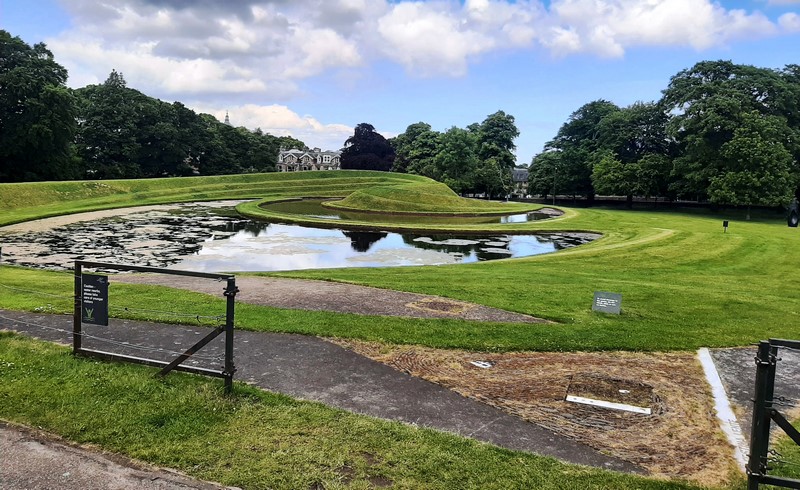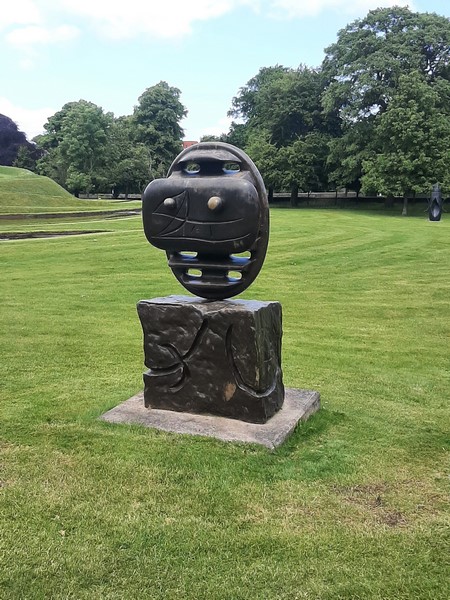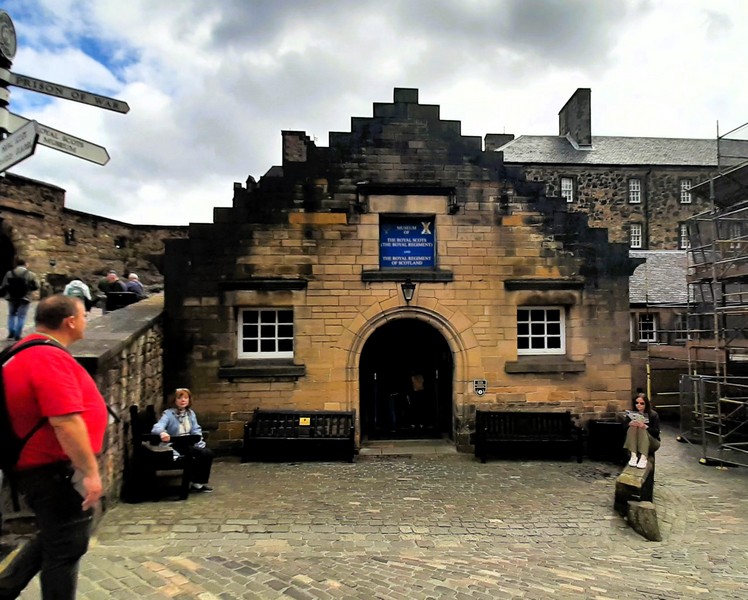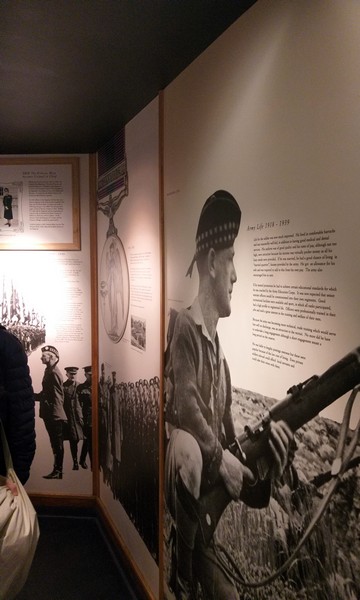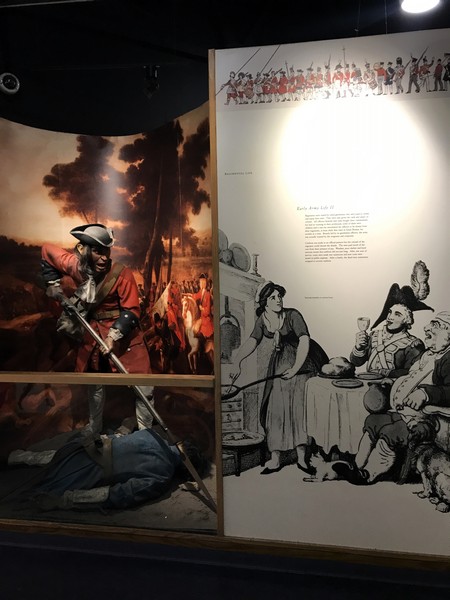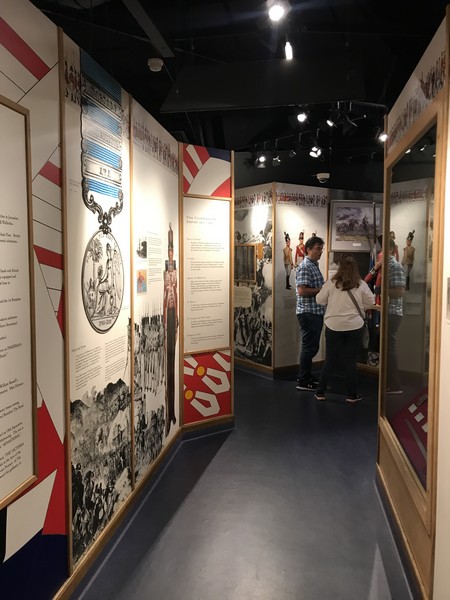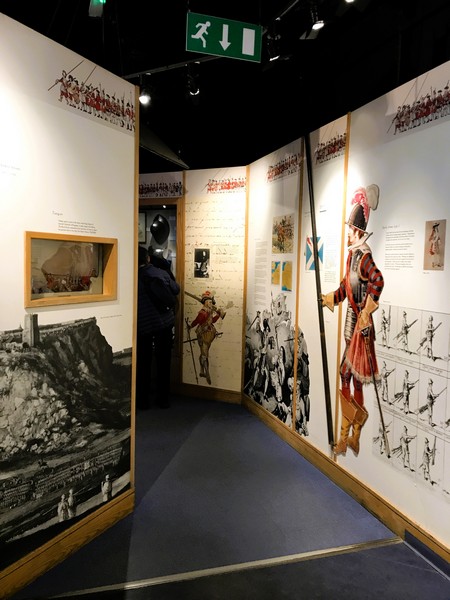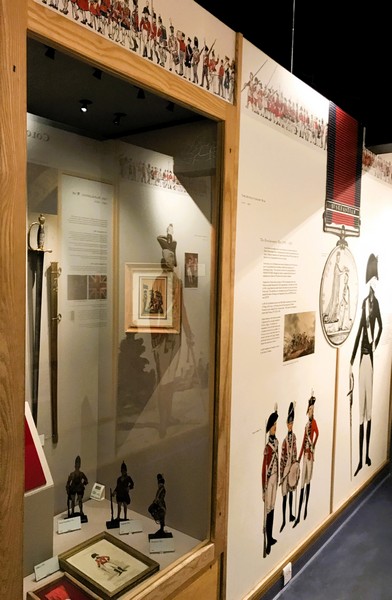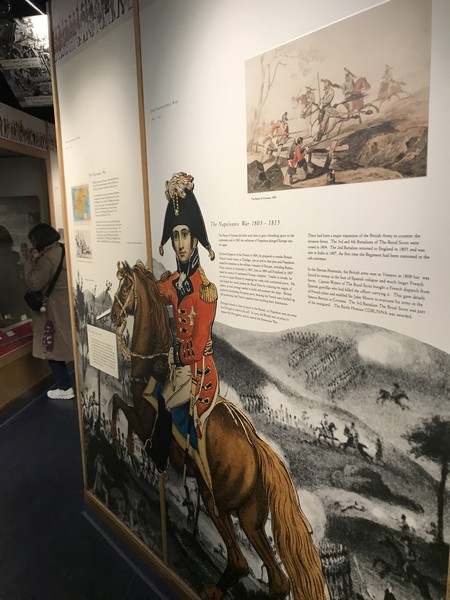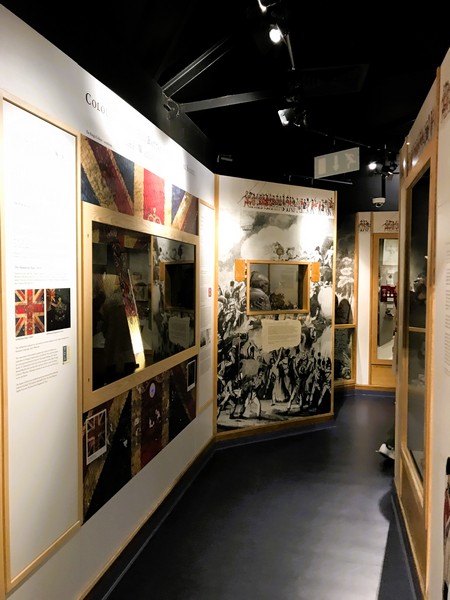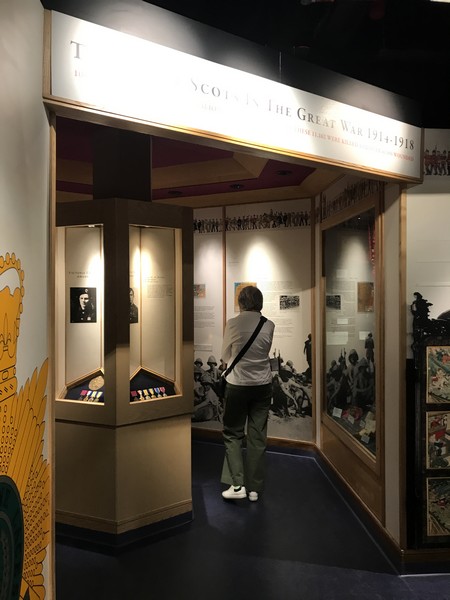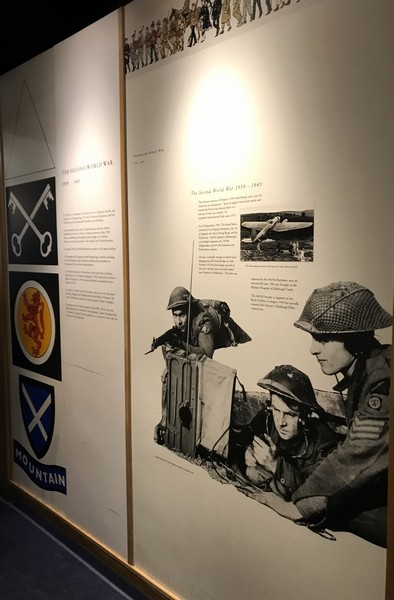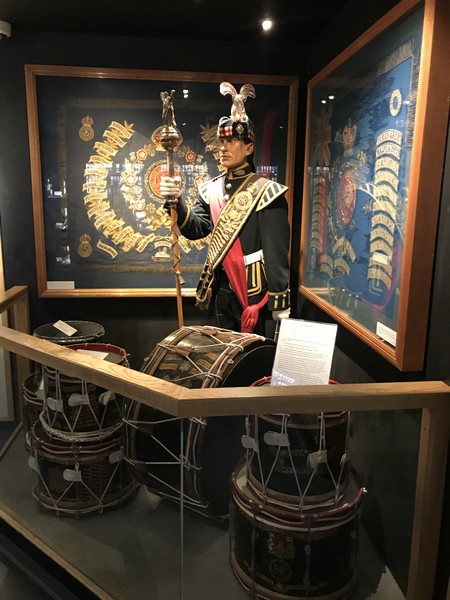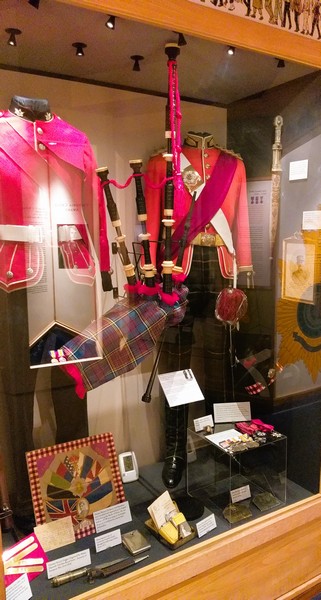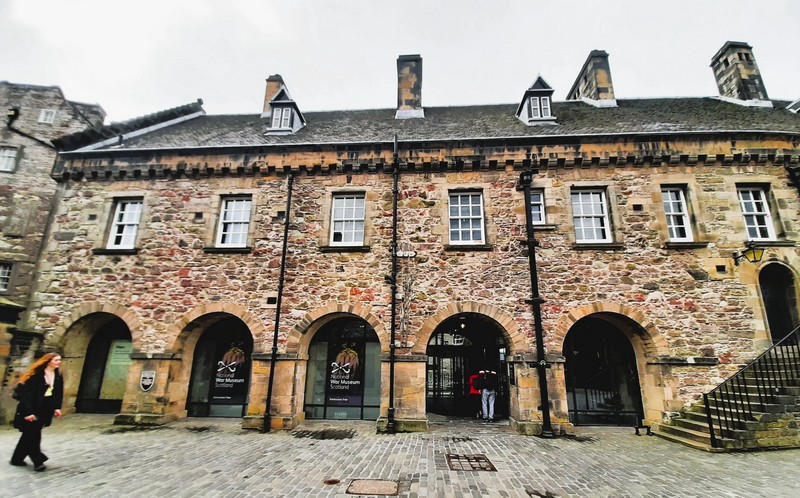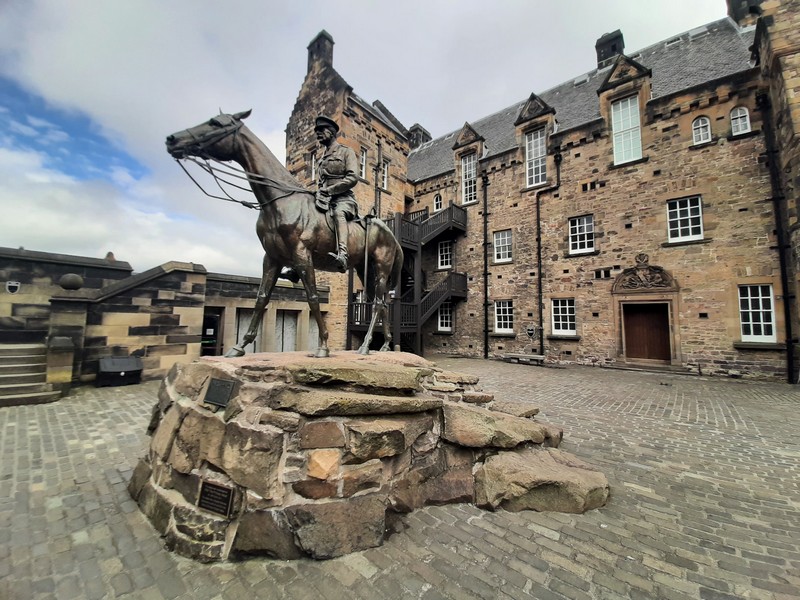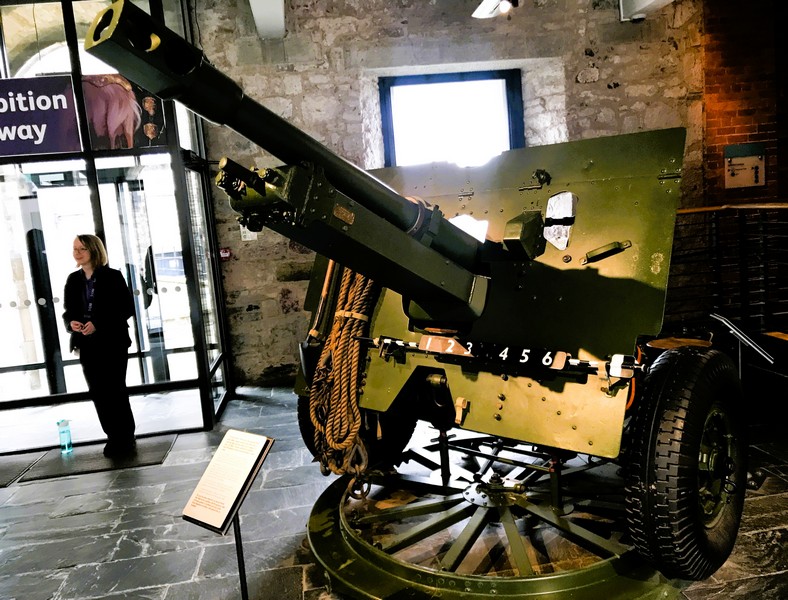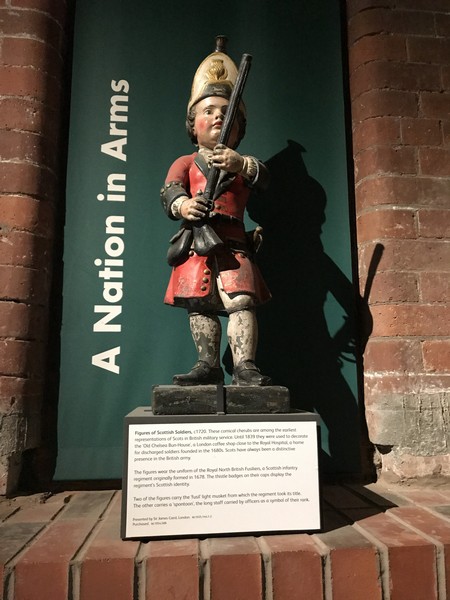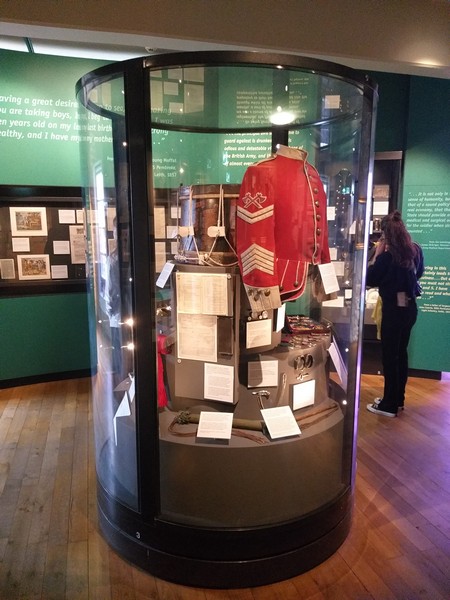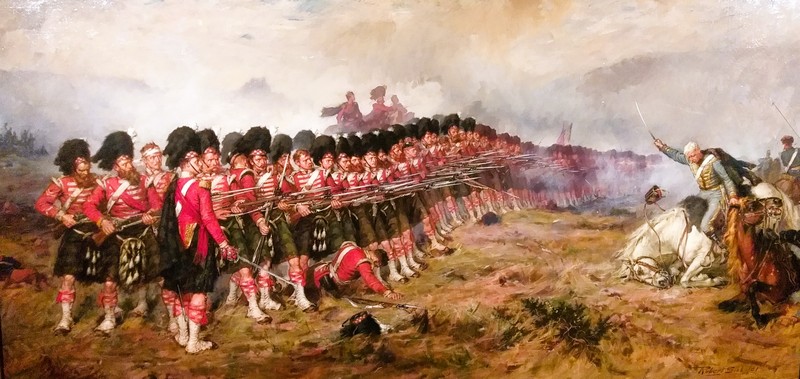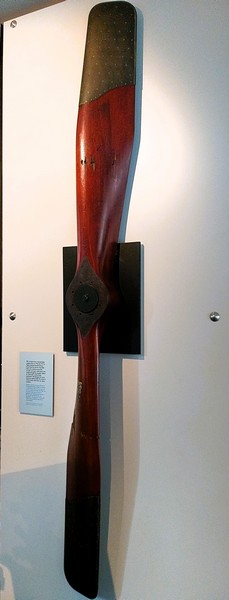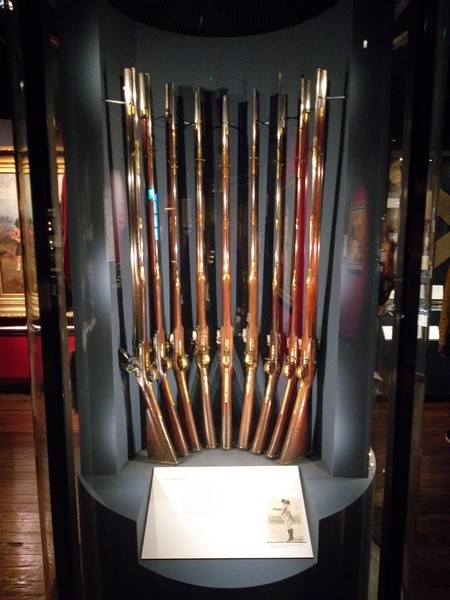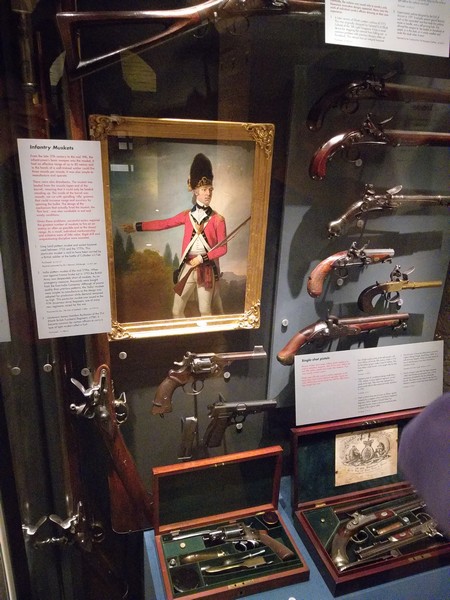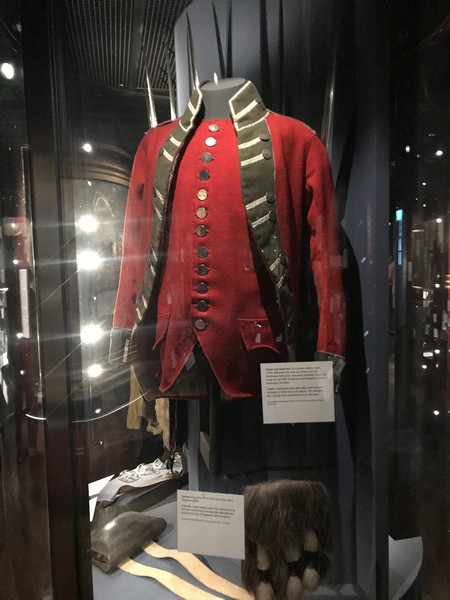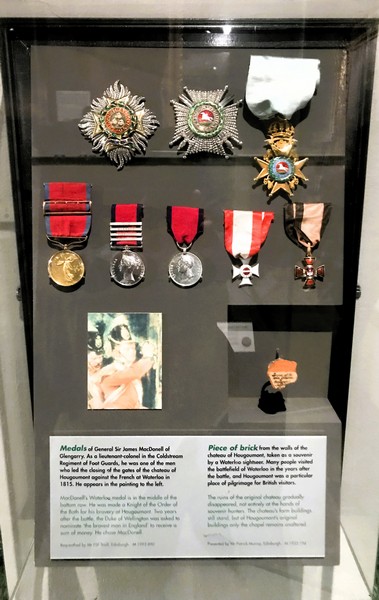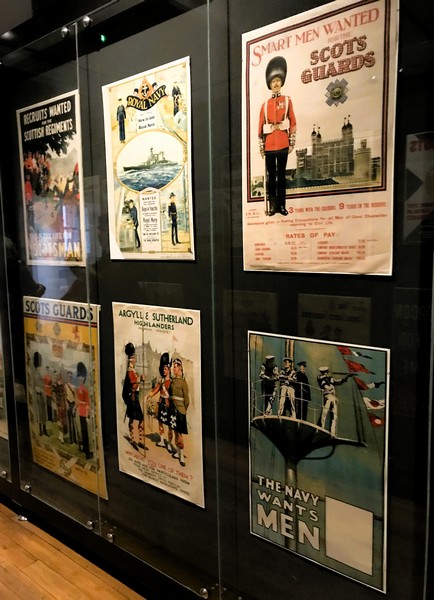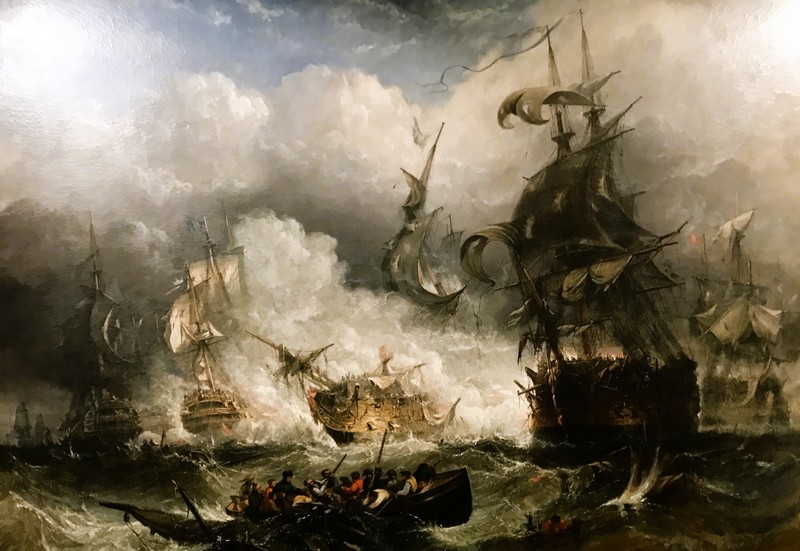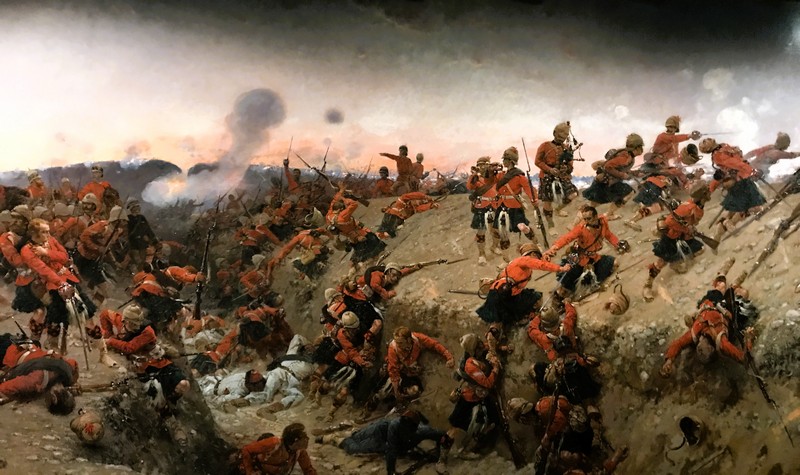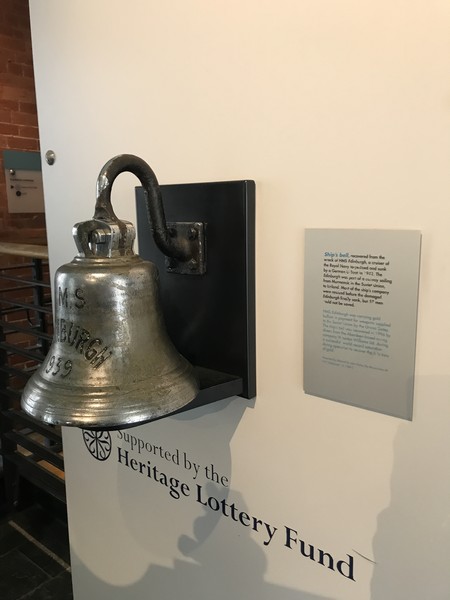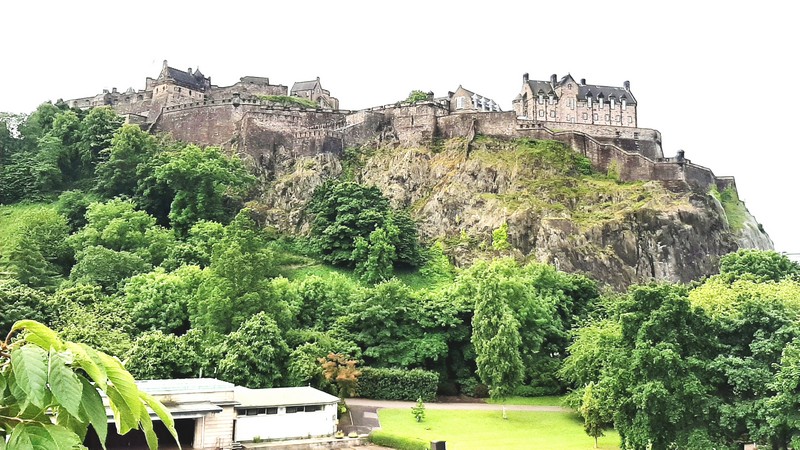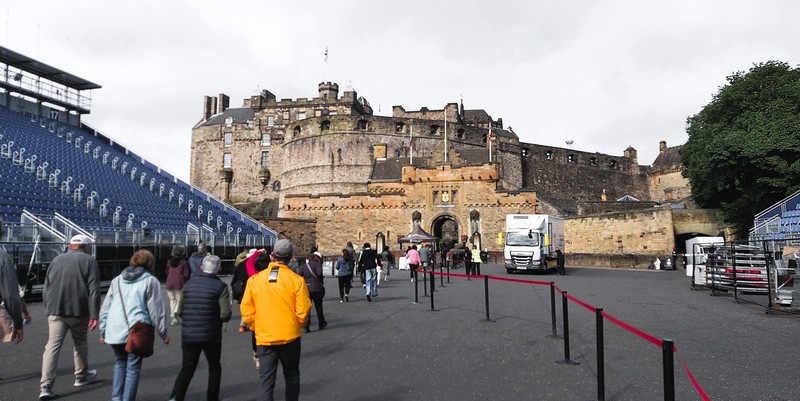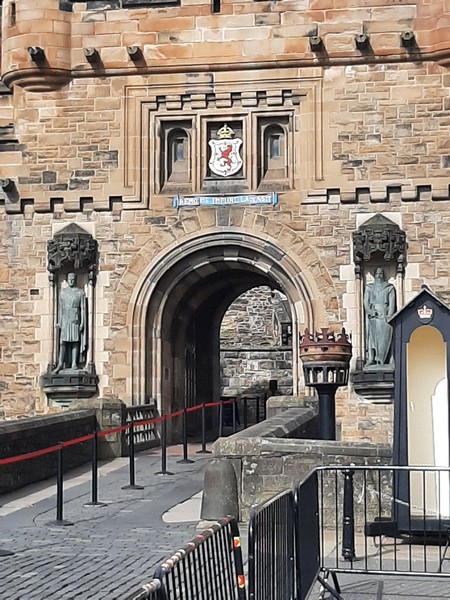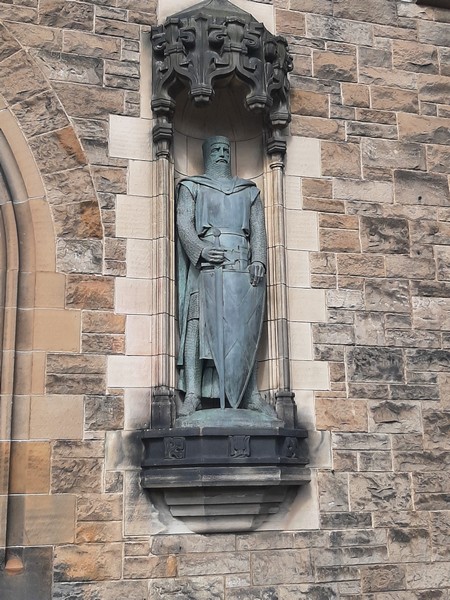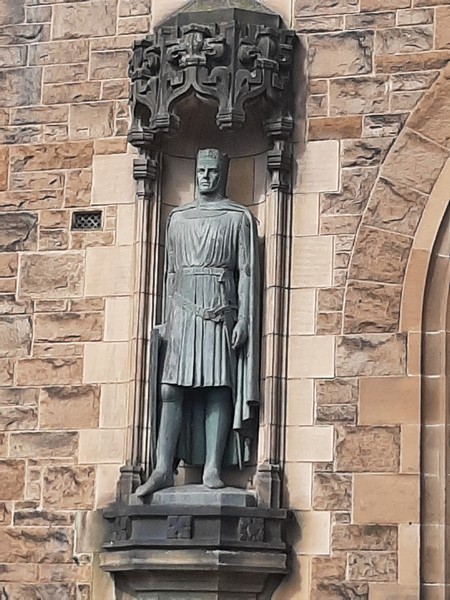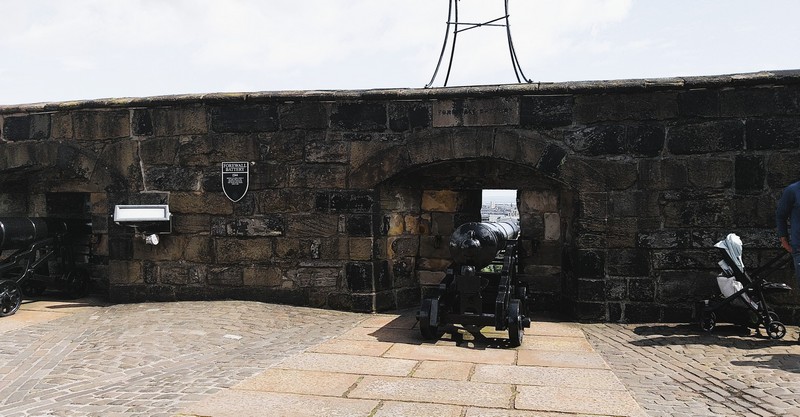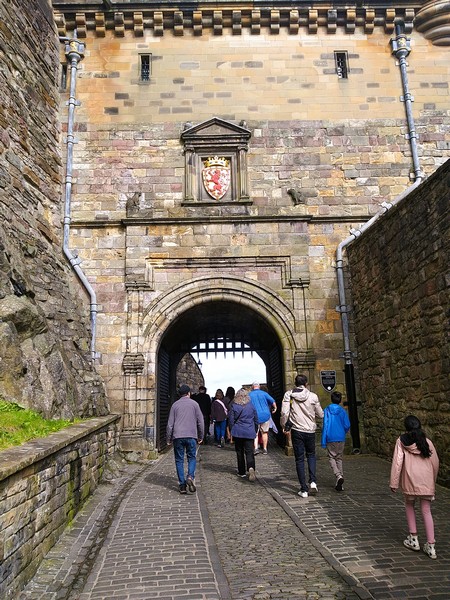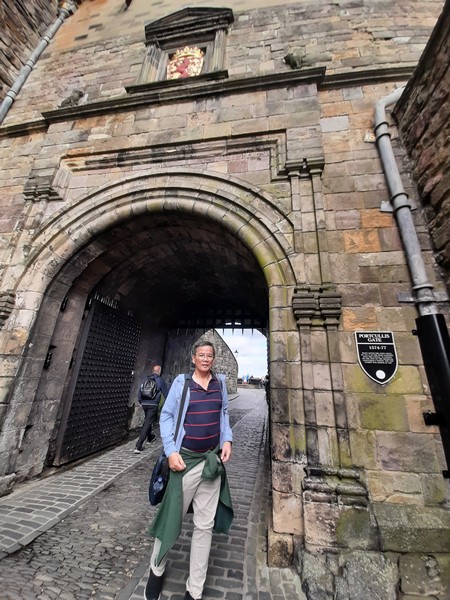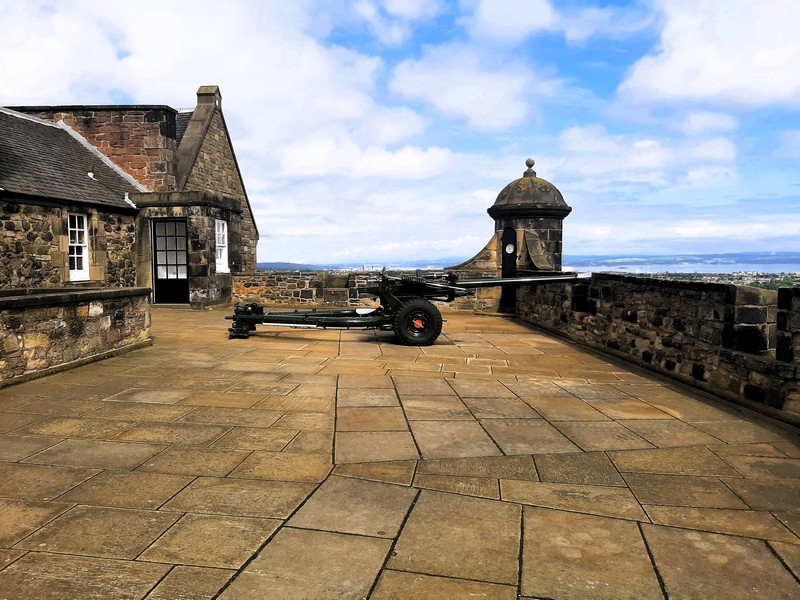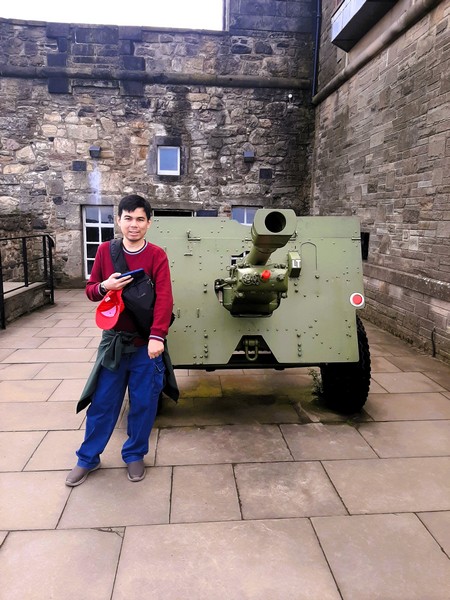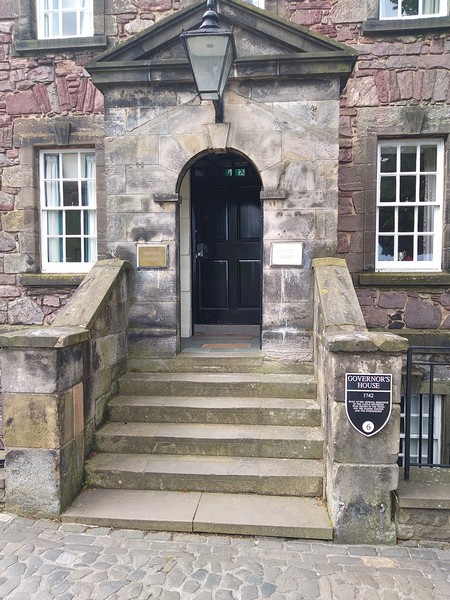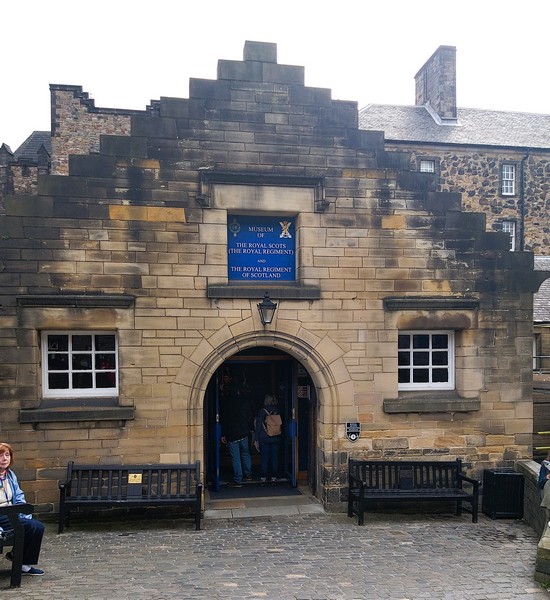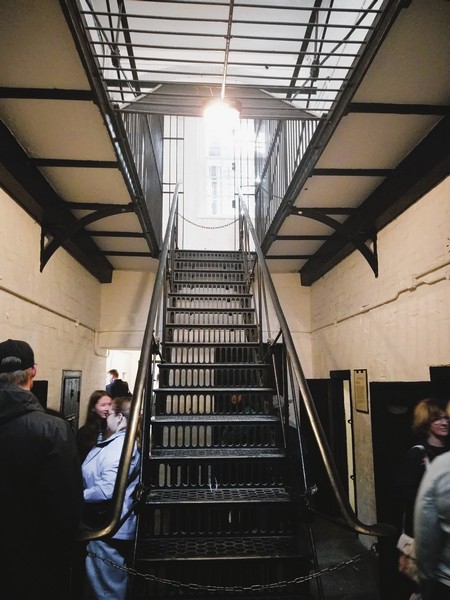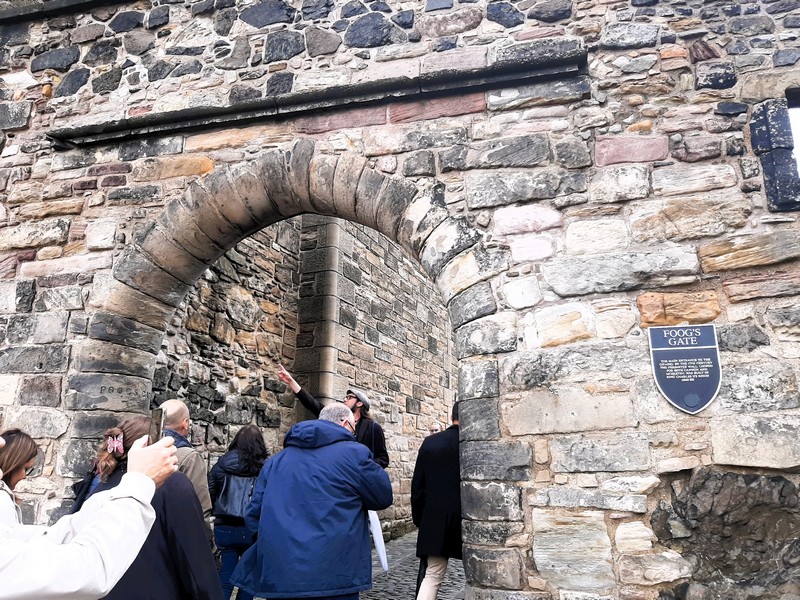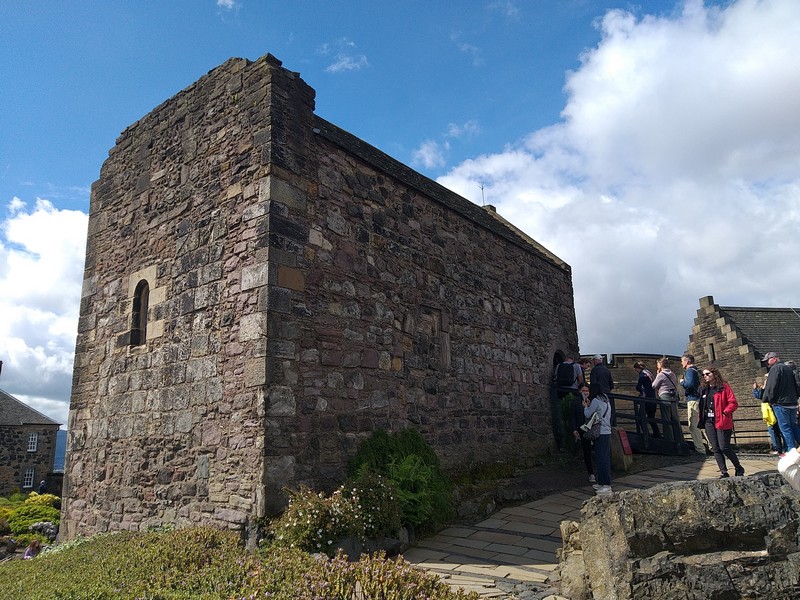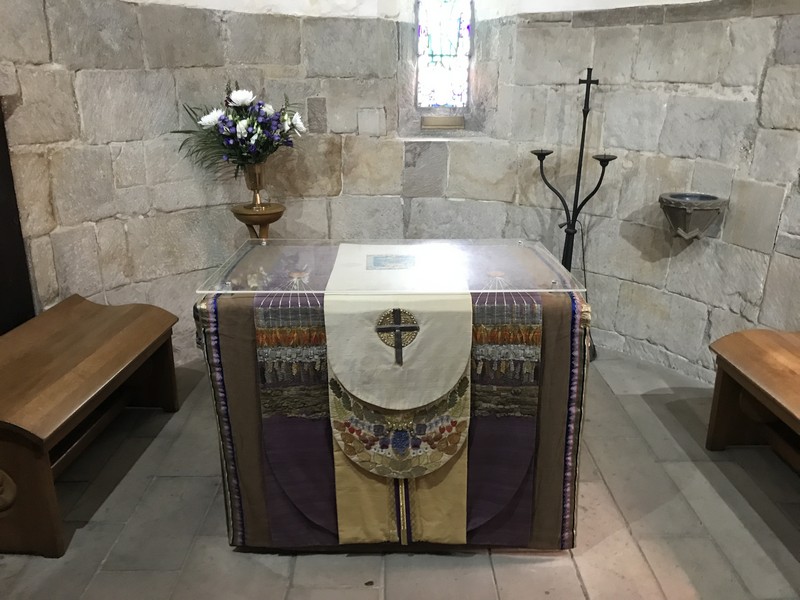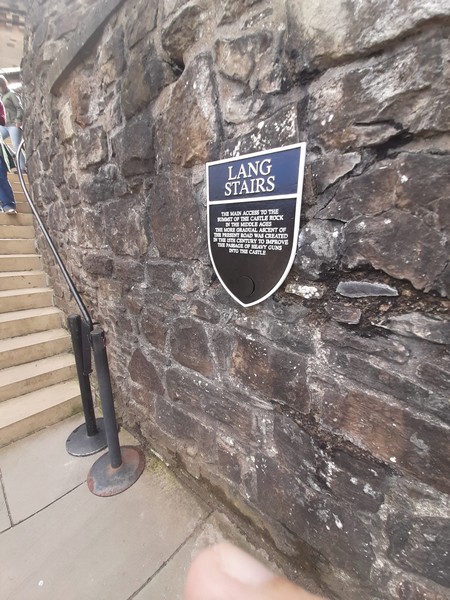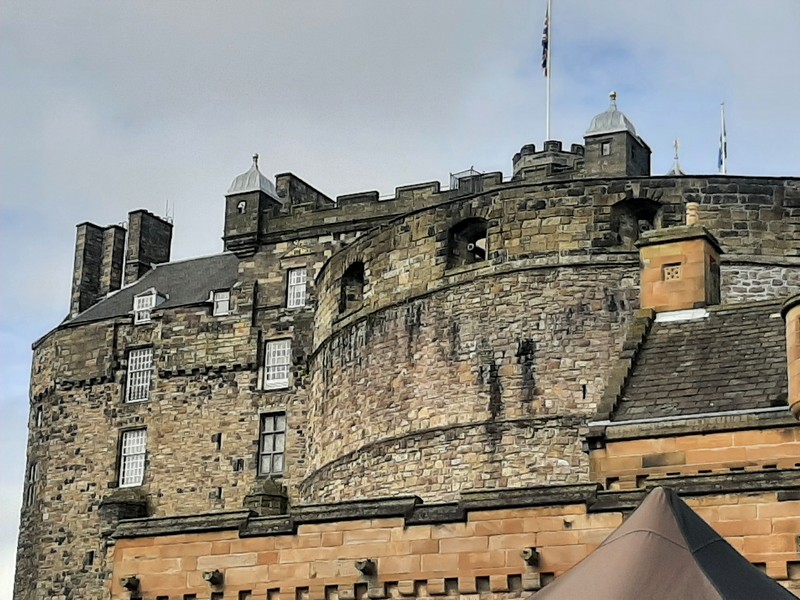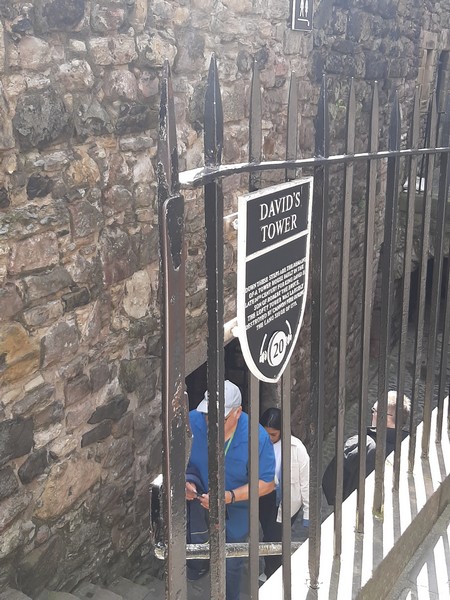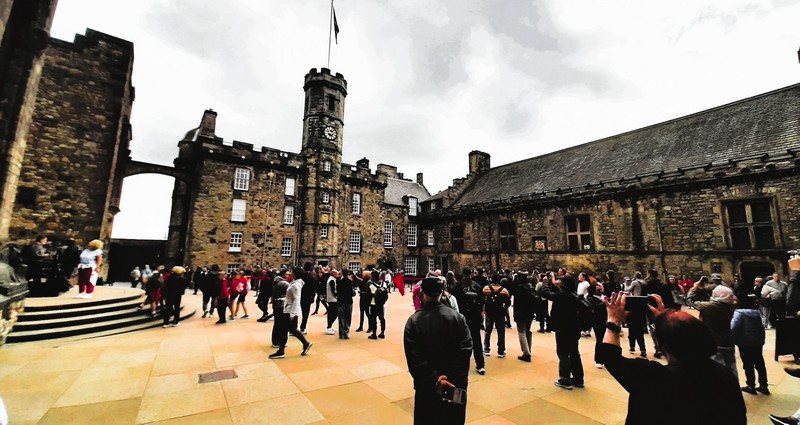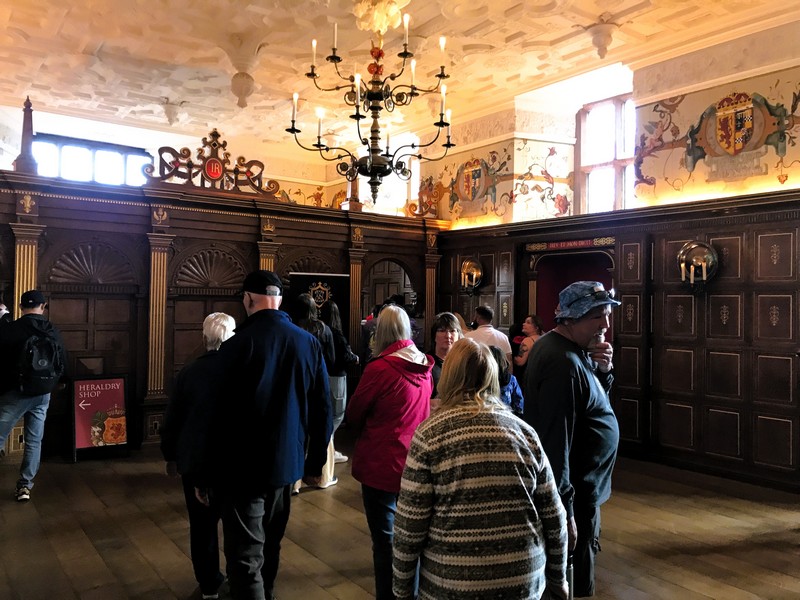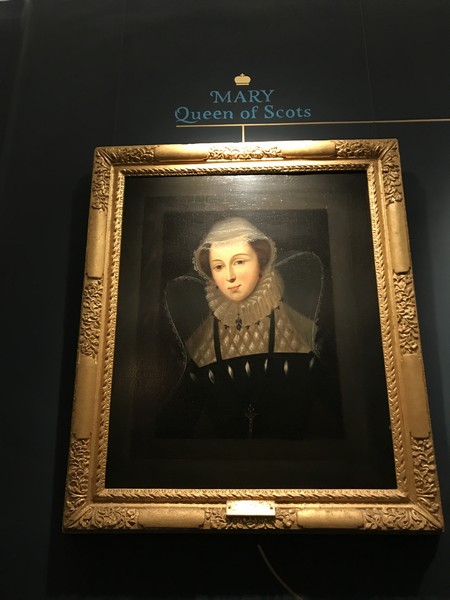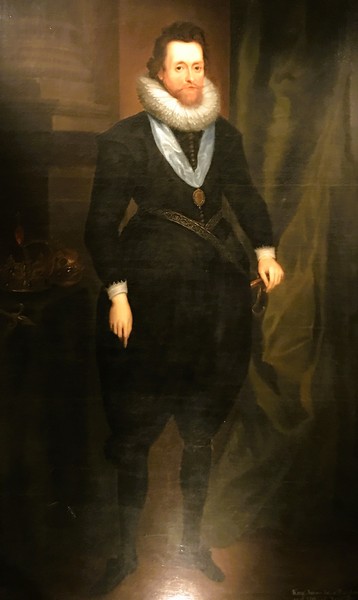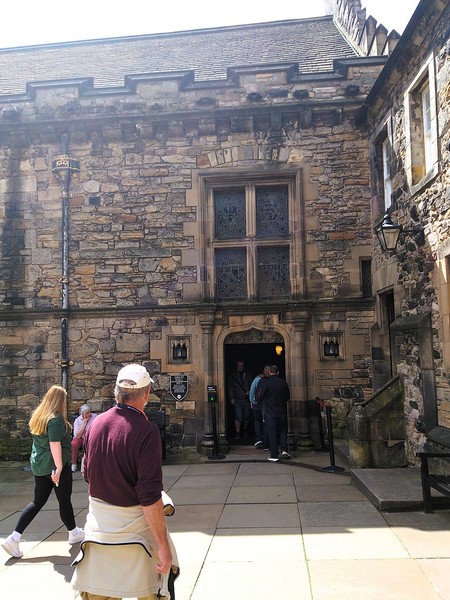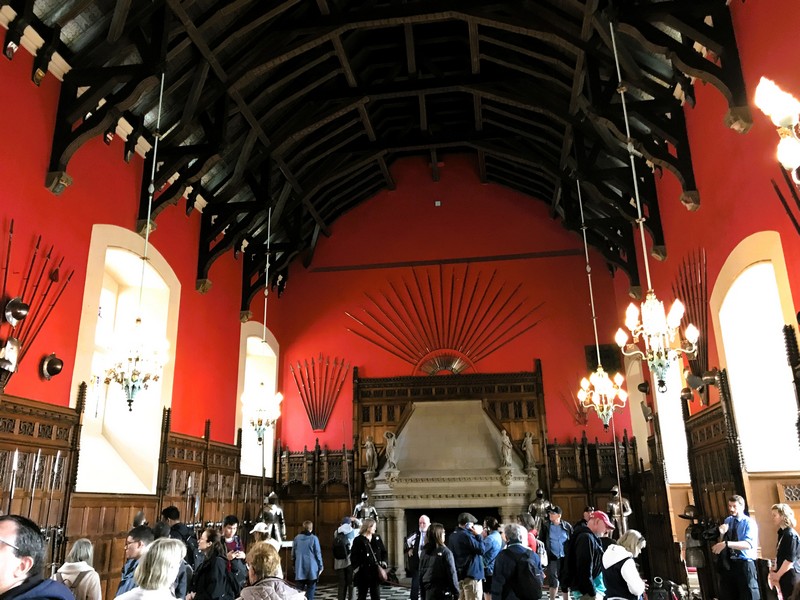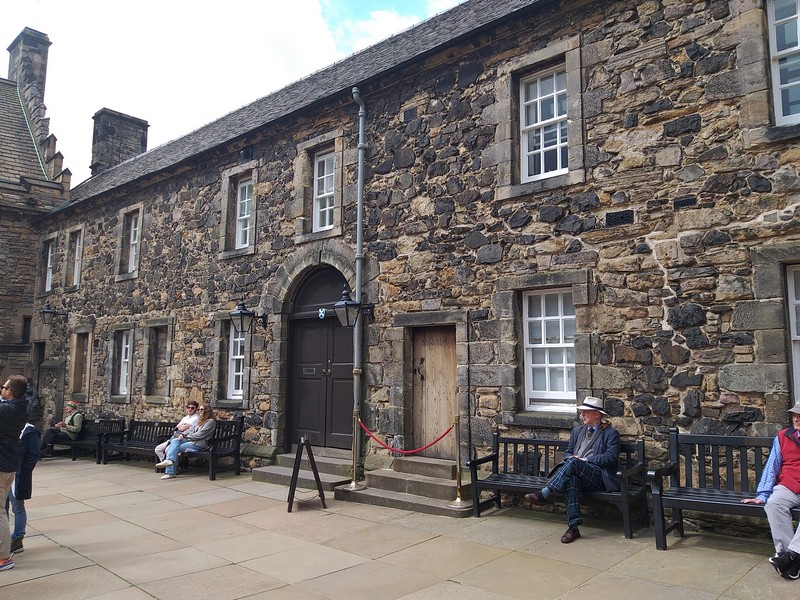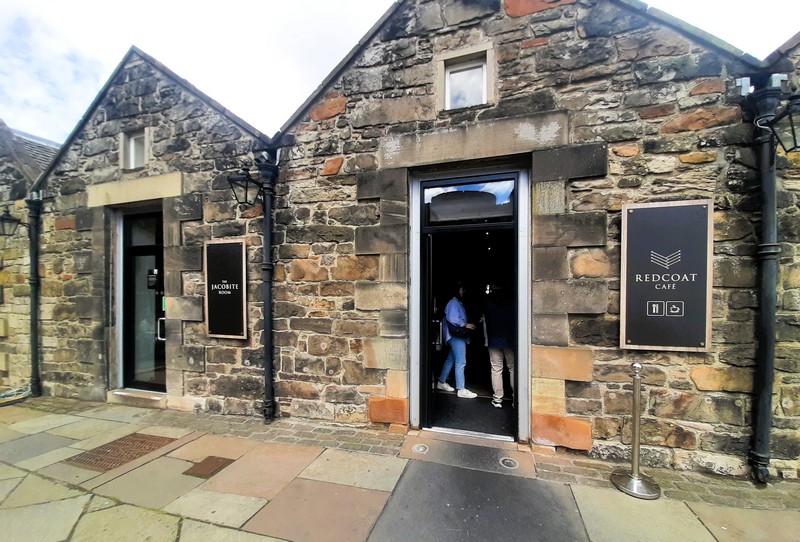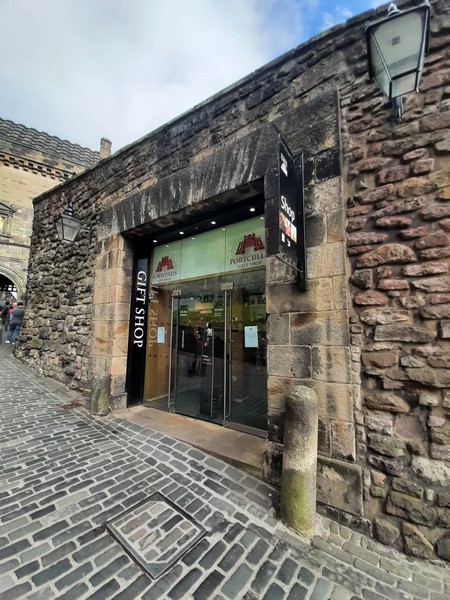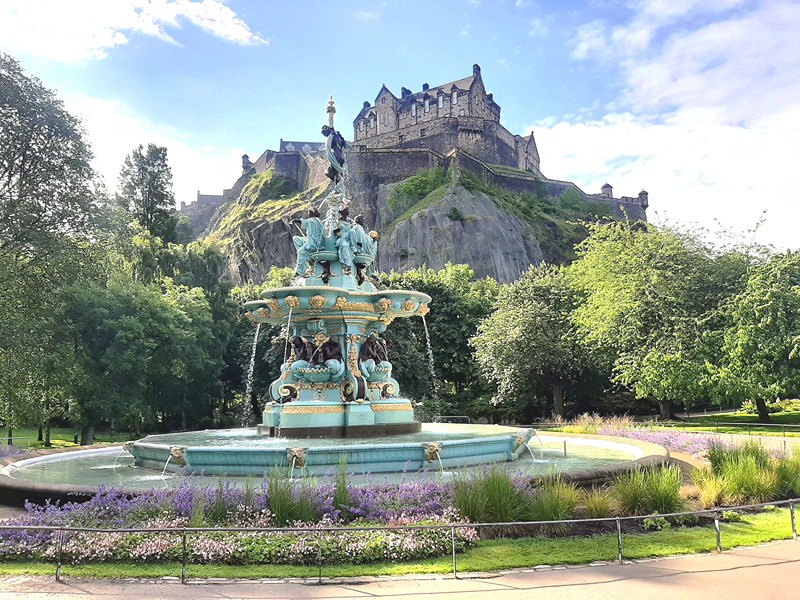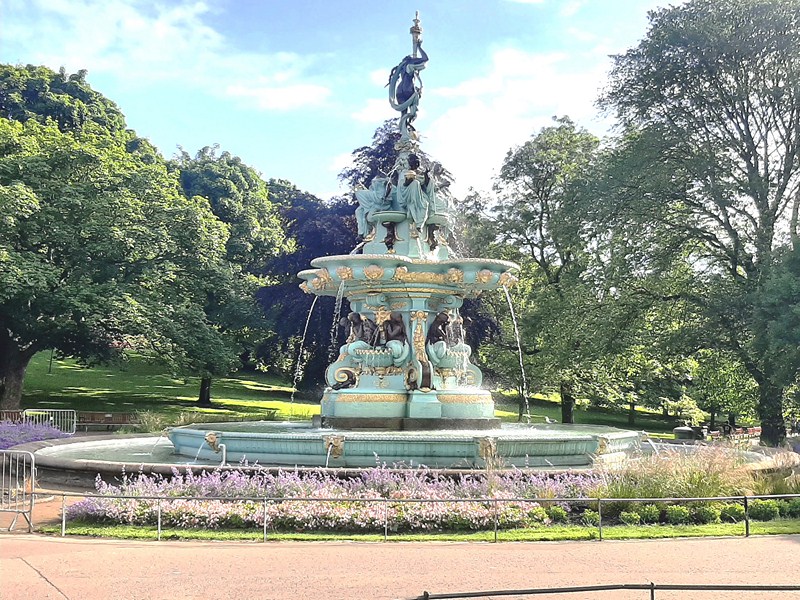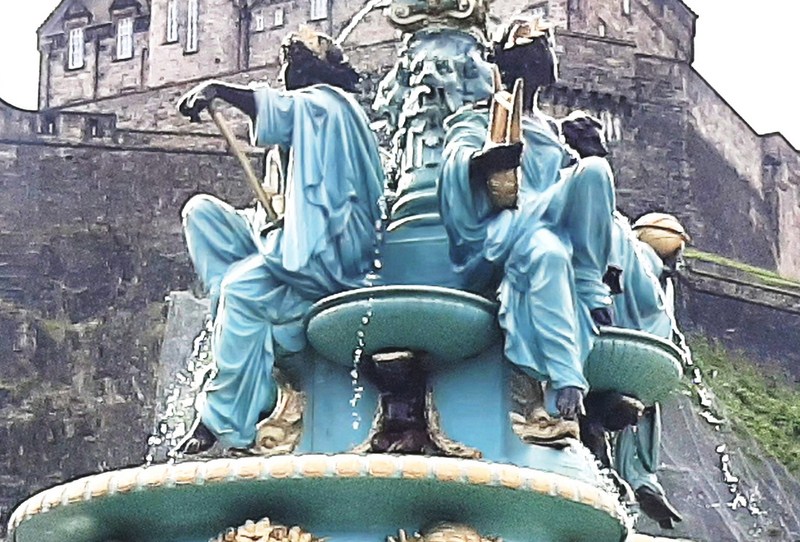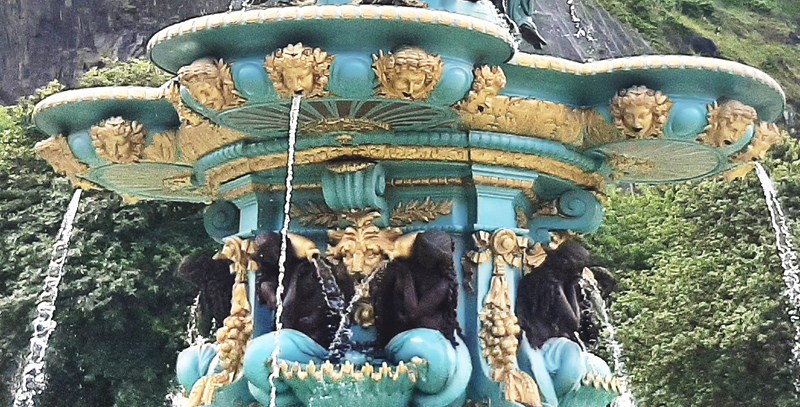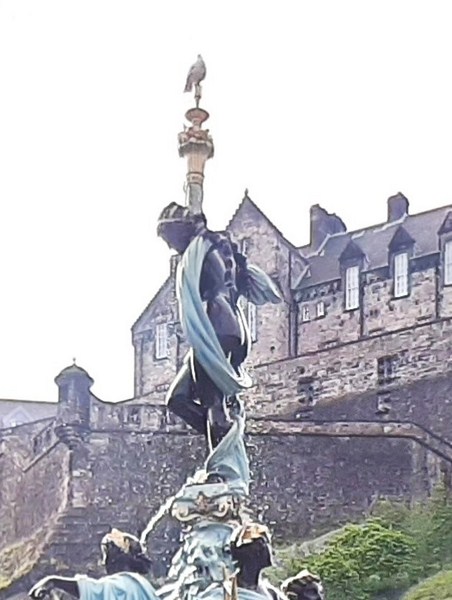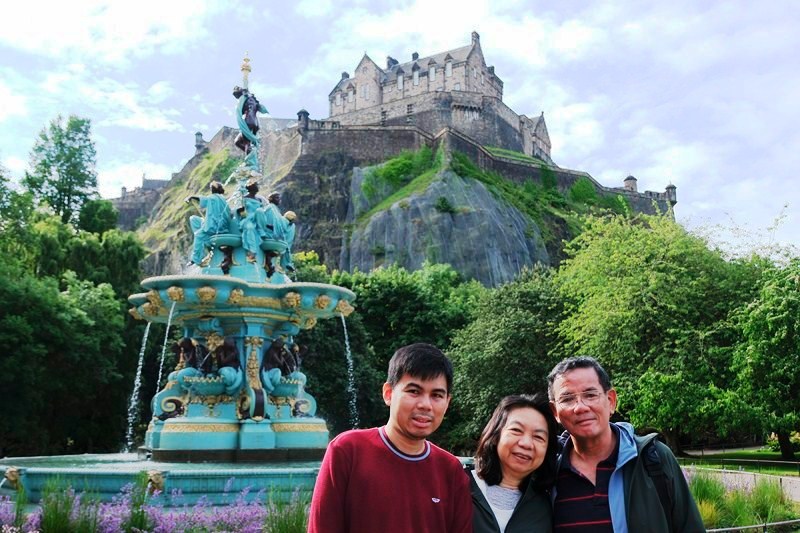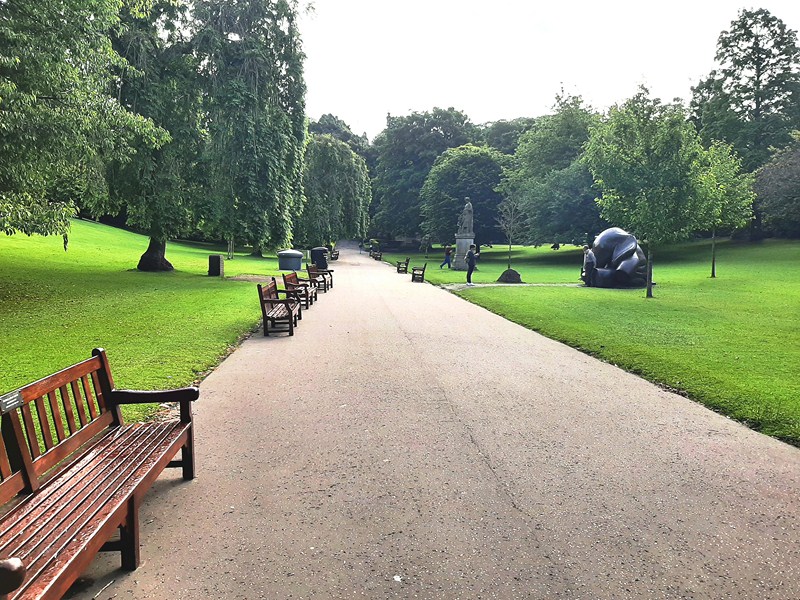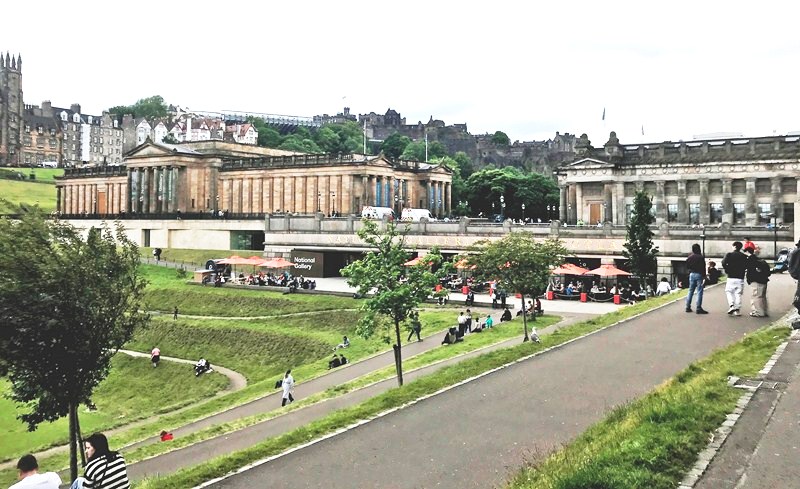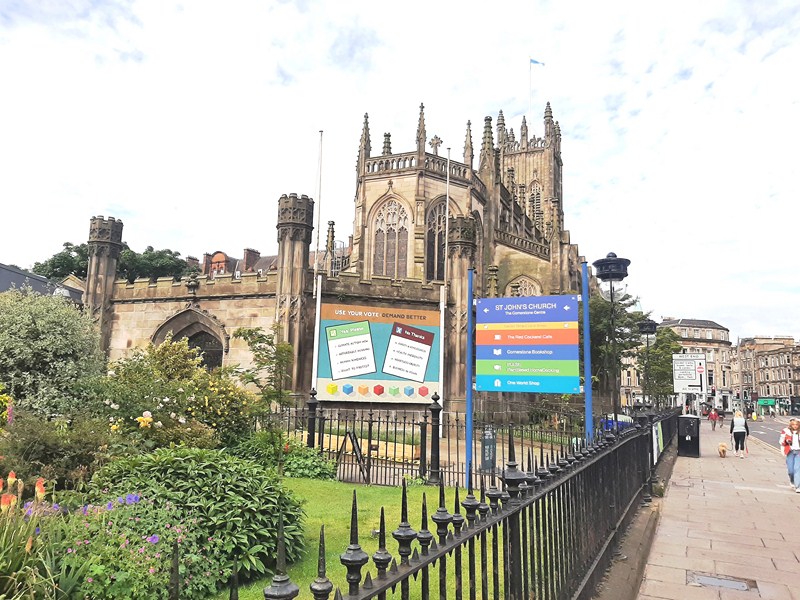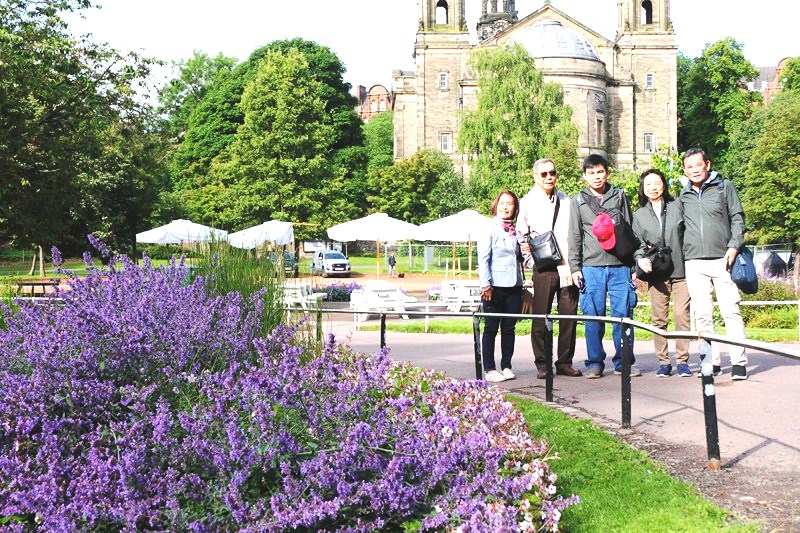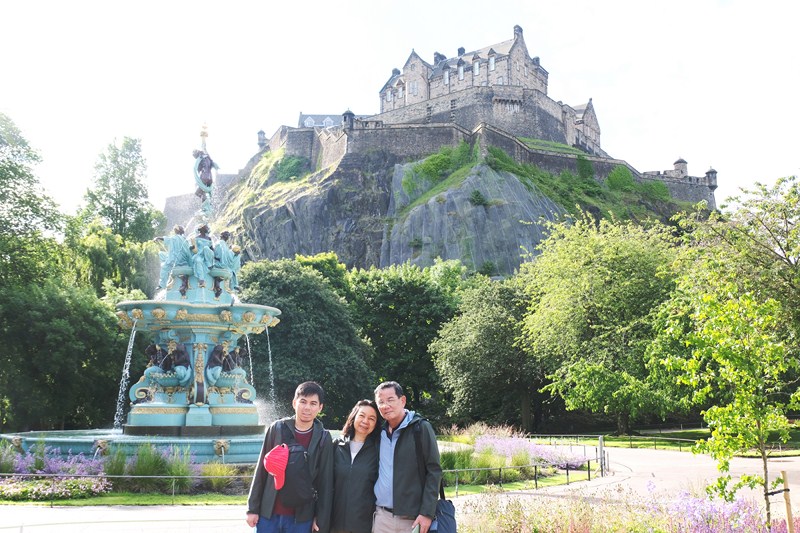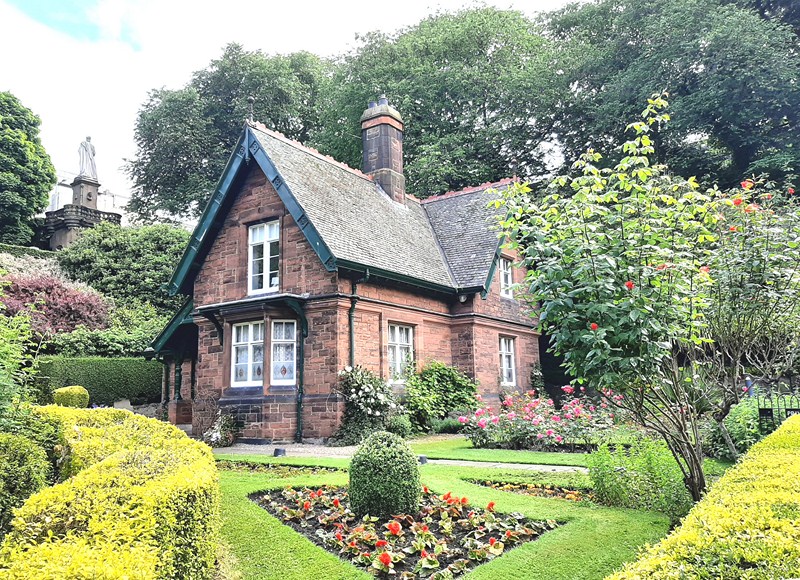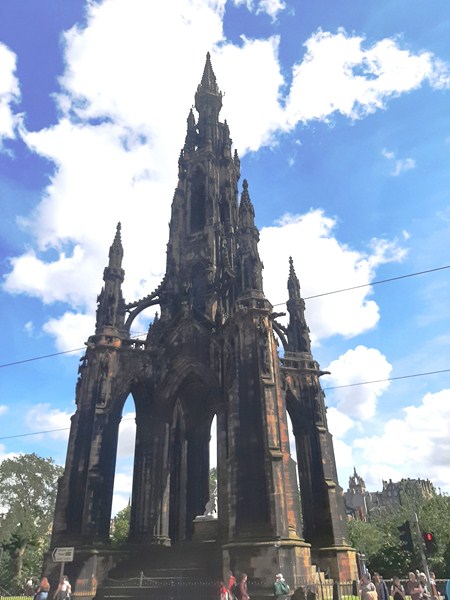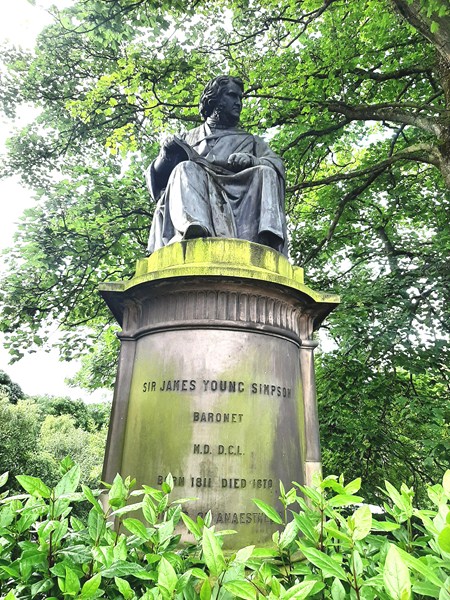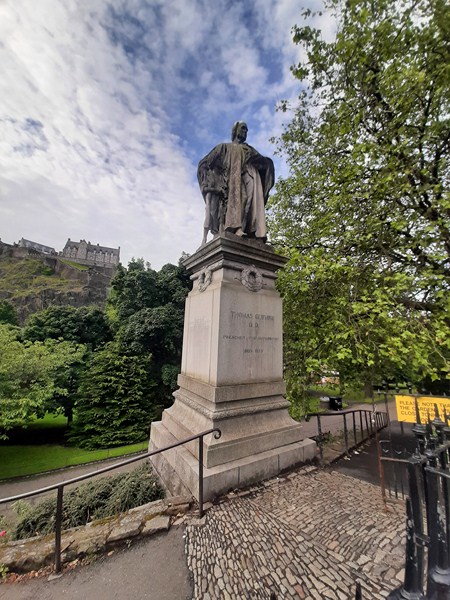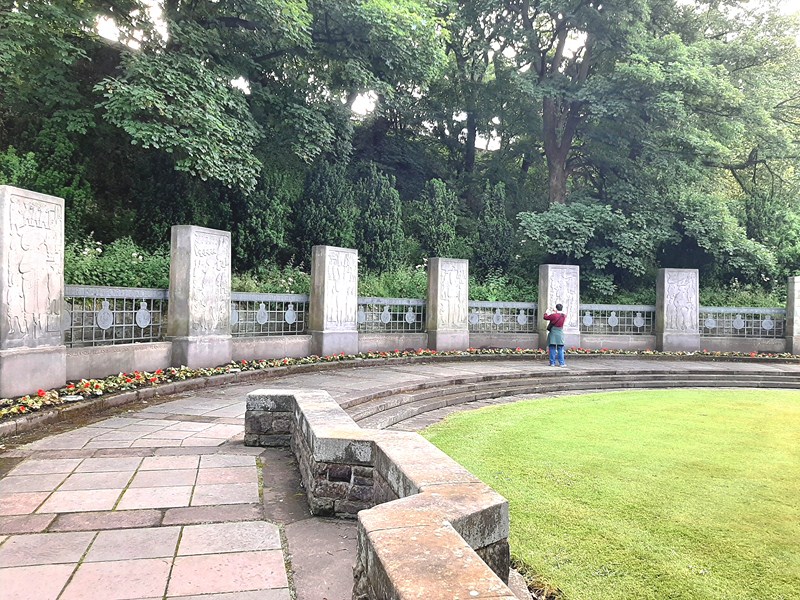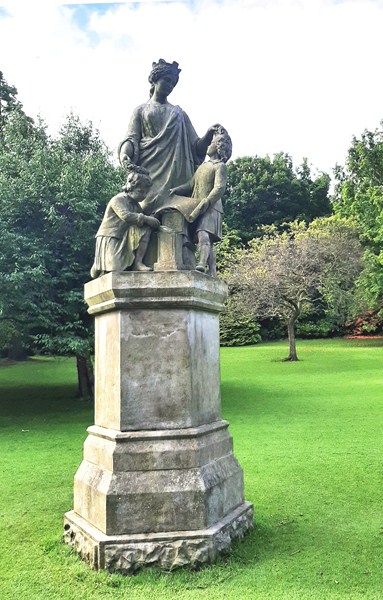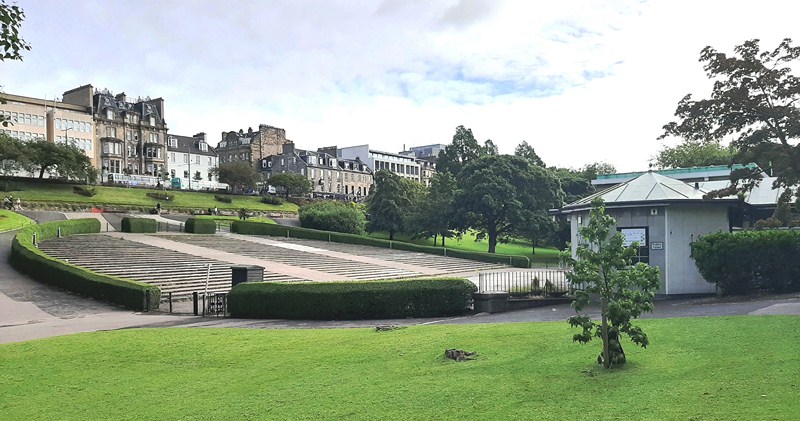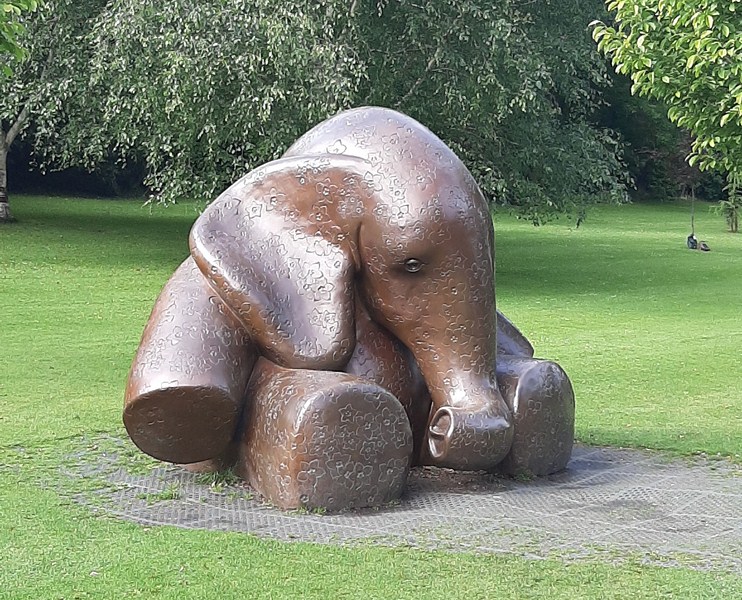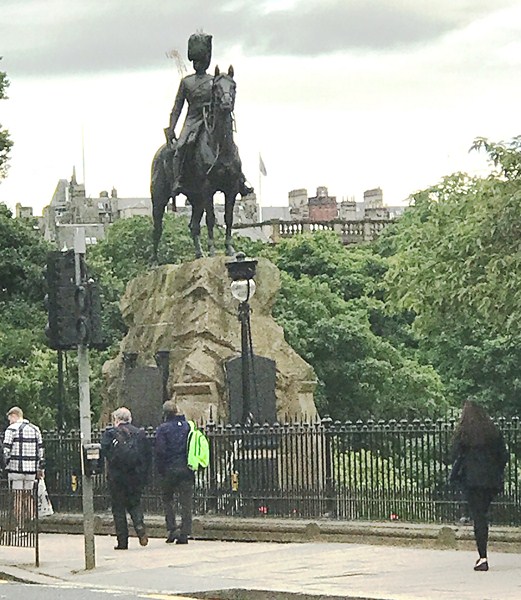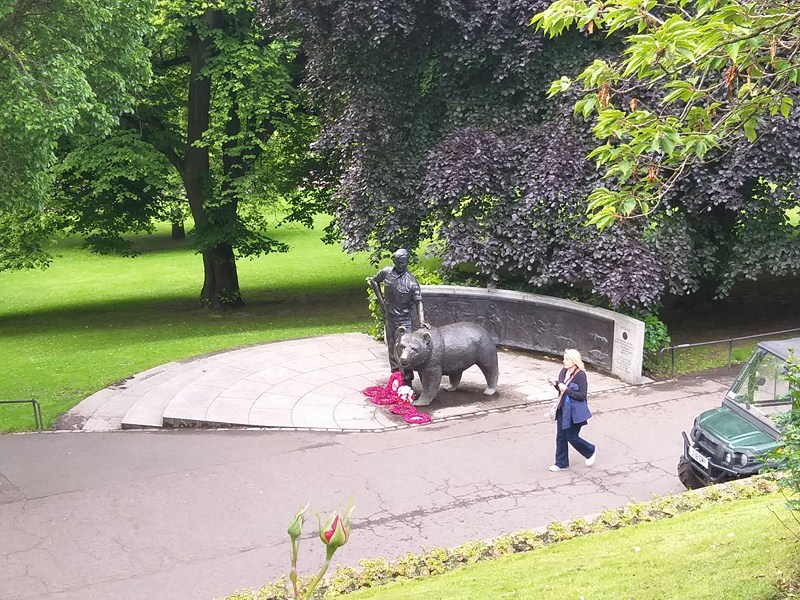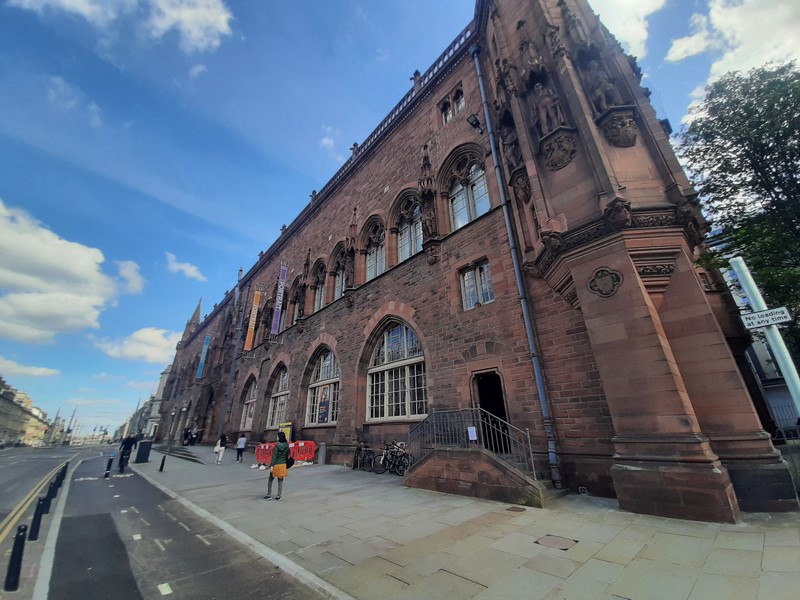
National Galleries of Scotland: Portraits. Sculpted figures of noted Scots, set in niches and designed by William Birnie Rhind, can be found around the corner.
National Galleries of Scotland: Portrait, an art museum holding the national collections of portraits (some 3,000 paintings and sculptures, 25,000 prints and drawings), all of which are of, but not necessarily by, Scots, also holds the Scottish National Photography Collection of 38,000 photographs.
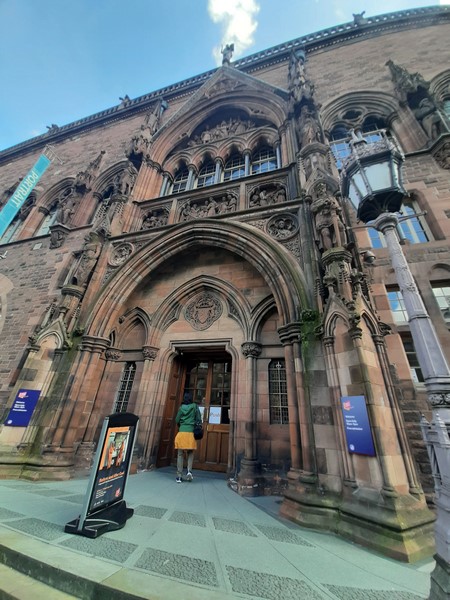
The entrance to the museum, guarded by statues of William Wallace and Robert the Bruce, leads to the main entrance hall,
It is part of National Galleries Scotland, a public body that also owns the Scottish National Gallery of Modern Art and the Scottish National Gallery in Edinburgh.
It is the first in the world to be specially built as a national portrait gallery (the National Portrait Gallery, London, established in 1856, was the first such separate museum in the world but it did not move into its current purpose-built building until 1896).
Here’s the historical timeline of the museum:
- In 1780, the Society of Antiquaries of Scotland was founded by the David Erskine, 11th Earl of Buchan. Its members donated items of interest. The mildly eccentric Erskine also formed a collection of Scottish portraits, many of which are now in the museum.
- In 1781, the society bought the Antiquarian Society Hall, located between the Cowgate and Parliament Close, just to the west of Old Fishmarket Close, as a place to properly store this material.
- From 1826, it rented space in the Royal Institution at the foot of The Mound, owned by the Board of Manufactures.
- By 1851, its collections were in 24 George Street
- In November 1851, it agreed with the Board to make the collections National Property, with the government to provide continuing accommodation for the collections and for the Society’s meetings.
- In 1858, as part of the 1851 agreement, the collections were moved back to the Royal Institution.
- In 1882, John Ritchie Findlay, owner and chief proprietor of The Scotsmannewspaper, endowed a new building on Queen Street, costing £50,000, designed by architect Sir Robert Rowand Anderson to accommodate both the antiquities collections and the portraits of the Society of Antiquaries of Scotland. That same year, the portrait gallery was established before its new building was completed.
- In 1885, construction of the building began.
- In 1889, the building was opened under curator John Miller Gray. When it opened, a large Main Hall, at the center of the façade, formed a shared entrance to the two institutions with Portrait occupying the east wing of the building, and the Museum of Antiquities taking up the west wing.
- In 1890, the building was completed.
- In 1985 the National Museum of Antiquities of Scotland was amalgamated with the Royal Scottish Museum, and later moved to Chambers Street as part of the National Museum of Scotland.
- in 2009, the Museum of Scotland (the former National Museum of Antiquities) moved to a new building.
- In April 2009, the first comprehensive refurbishment in its history, carried out by Page\Park Architects, was undertaken, with funding from the Scottish Governmentand the Heritage Lottery Fund, amongst others. Portrait was expanded to take over the whole building. The gallery spaces were restored to their original layout (removing false walls, lowered ceilings, opening up windows, restoration of the great coved ceilings on the upper floors on the west side, and revealing hidden Victorian details like the elegant stone arcade in the Ramsey Room), with areas set aside for education, a new gallery specially earmarked for photography, the decent size shop & café, and a new glass lift—greatly improving access for disabled visitors. After the changes, Portrait has 60% more gallery space. The cost of the refurbishment was £17.6 million.
- On December 1, 2011, the museum was reopened with 849 works displayed, of which 480 were by Scots.
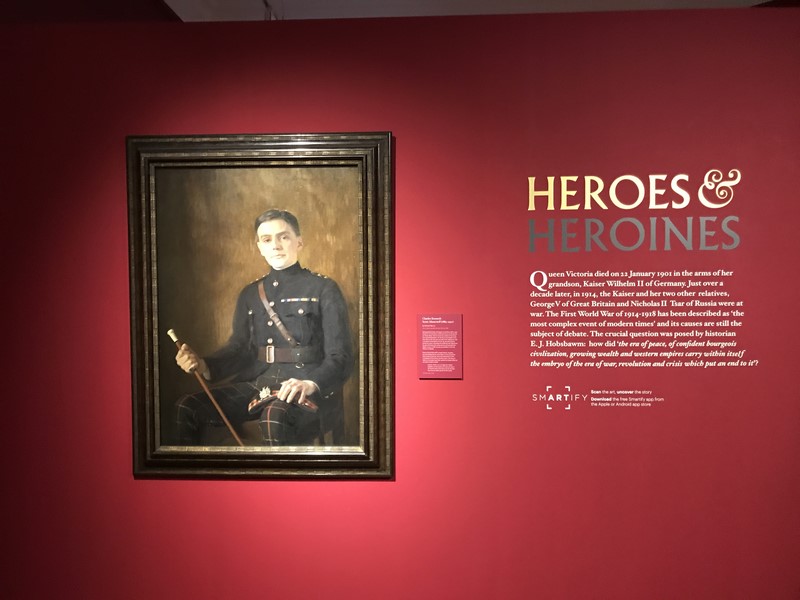
Heroes and Heroines Gallery. At left is a portrait of Charles Kenneth Scott-Moncrieff done by Edward Stanley Mercer.
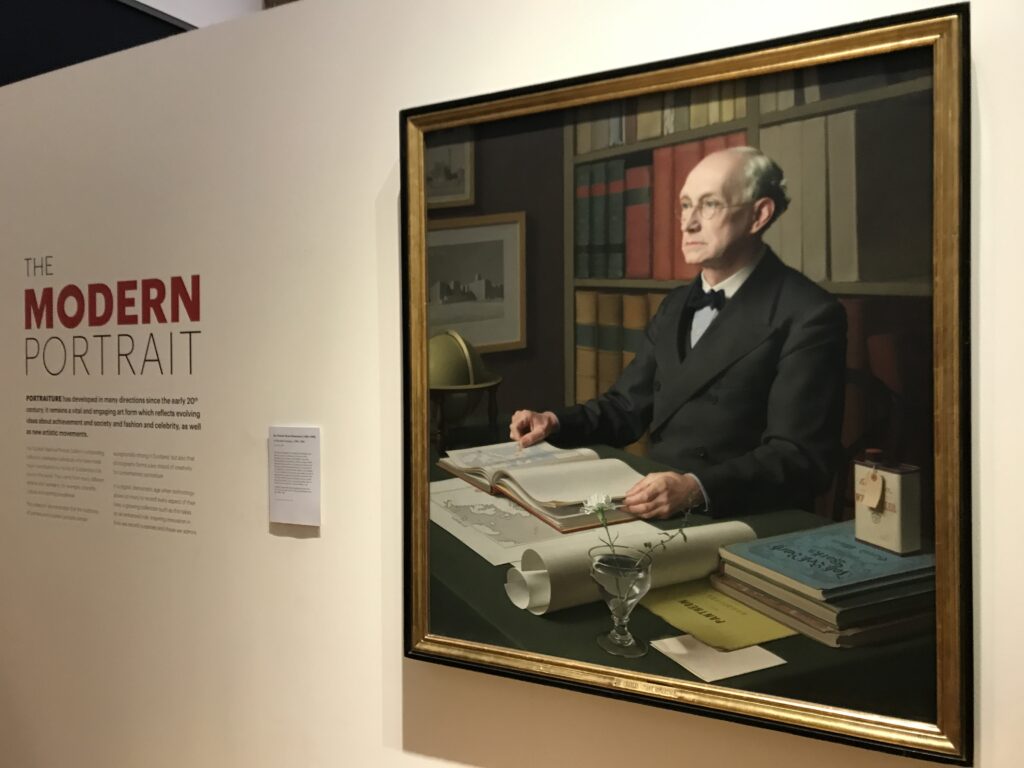
The Modern Portrait Gallery. At right is a portrait of Sir Charles Grant Robertson done by Meredith Frampton
The large, symmetrical, three-level building, at the east end of Queen Street, was built with red sandstone from Corsehill in Dumfriesshire. It comprises 5,672 sq. m. and is a Category A listed building.
Built in Gothic Revival (with a combination of Arts and Crafts and 13th-century Gothic influences) style, it is noted for its ornate Spanish Gothic style (an unusual addition to Edinburgh’s mostly Georgian Neoclassical New Town) with carved, pointed arched windows and a main entrance, on the Queen Street front, surrounded by a large gabled arch.
The entrance, guarded by statues of William Wallace and Robert the Bruce, leads to the main entrance hall, arcaded with pointed arches, which originally served both Portrait to its east, and the National Museum of Antiquities of Scotland to its west. The gallery’s distinctive feature is its four octagonal corner towers topped with crocketed Gothic pinnacles.
Sculpted figures of noted Scots, set in niches and designed by William Birnie Rhind, can be found around the exterior. Added in the 1890s, they compensate for the lack of contemporary portraits of medieval Scots in the gallery’s collection at the time.
The large processional or pageant frieze, its mural painted by William Hole inside the main entrance hall balustrade, was added in 1898. Depicting an array of notable Scots from history in reverse chronological order, these figures were added to the frieze over the years after the gallery opened.
Starting with Thomas Carlyle, it includes David Livingstone, James Watt, Robert Burns, Adam Smith, David Hume, the Stuart monarchs, Robert the Bruce and Saint Ninian. Later, Hole added further large mural narrative scenes on the first floor.
The museum’s collection essentially begins in the Renaissance, initially mainly with works, of Scottish royalty and nobility, done by foreign artists, as well as mainly printed portraits of clergymen and writers.
The most notable paintings were mostly made on the Continent, often during periods of exile from the turbulent Scottish political scene. Religious art, as in England, has been all but extinguished by the Scottish Reformation. Until the 19th century, Scottish painting was dominated by portrait painting, with patrons gradually extending down the social scale and, in the 16th century, most painted portraits are of royalty or the more important nobility.
A portrait of James IV of Scotland, from 1507, is the oldest work in the collection. There are also two portraits of Mary, Queen of Scots, one painted some 20 years after her death in 1587, and the other is later still. A number of 19th-century paintings also show scenes from her life. Her three husbands also have portraits, including Darnley by Hans Eworth and an unknown painter, and miniatures from 1566 of Bothwell and his first wife.
There is a portrait of Regent Morton, Mary’s nemesis, by Arnold Bronckhorst from 1581. Although he only spent about three years there, Bronckhorst is the first artist to hold the title of “King’s Painter” in Scotland. The gallery holds several works by Bronckhorst, and his successor, Adrian Vanson, who were both skilled painters in the Netherlandish tradition. The collection includes portraits, of Stuart monarch James VI and I, by Bronckhorst and Vanson.
George Jamesone (1589/90-1644), the first significant native Scot to be a portrait painter, only once got the chance to paint Charles I, his monarch, when he visited Edinburgh in 1633. Two Jamesone self-portraits and portraits of the Scottish aristocracy, as well as some imagined portraits of heroes of Scotland’s past. are included in the collection.
There are also three portraits by John Michael Wright, Jamesone’s talented pupil, plus ten aristocratic portraits by Sir John Baptist Medina, the last “King’s Painter” before the Acts of Union 1707.
The museum has one of the earliest examples of portraits featuring tartan, which begin to be painted in the late 17th century (at that time apparently with no political connotations), a full-length 1683 portrait, by John Michael Wright, of Lord Mungo Murray, son of John Murray, 1st Marquess of Atholl, wearing a belted plaid for hunting.
After the 1745 Jacobite Rebellion, the wearing of tartan was banned but, after a few decades, reappears in grand portraits, before becoming ever more popular with Romanticism and the works of Sir Walter Scott. after her arrest for helping Bonnie Prince Charlie to escape after the 1745 Jacobite Rebellion, Flora MacDonald was painted by Richard Wilson , also wearing tartan, in London.
In the 18th century, Scottish portrait painting flourished and Allan Ramsay and Sir Henry Raeburn, with 13 and 15 works respectively, are well represented, Sir Henry Raeburn with many paintings of figures from the Scottish Enlightenment, as well as the recently acquired lost portrait of Charles Edward Stuart.
The career of Sir Henry Raeburn extends into the 19th century, with portraits of Walter Scott and others. The museum owns the iconic portrait, by Alexander Nasmyth, of Robert Burns .
Sculptor and gem-cutter James Tassie (1735–1799) has the largest number of works, by a single artist, with 58. With 18th century Scottish high society subjects including Adam Smith, James Beattie and Robert Adam (he disliked having his portrait taken but Tassie was a member of his social circle he did not refuse, with the result that, as with the Naysmyth portrait of Burns, almost all images of Smith derive from the exemplar in the museum), Tassie, along with Irish physician Henry Quin, developed a distinctive format of large fired glass paste (or vitreous enamel) relief “medallion” portraits in profile, initially modelled in wax.
Despite no such dominant figures, the later 19th century in Scotland had many fine artists, and saw the beginning of photography. A gallery, in the museum, is devoted to the photographs of Glasgow life taken by Thomas Annan. In general, the displays concentrate on the common people of Scotland, especially the images of slums taken from 1868 to 1871.
In the present day, the collection continues to expand, with Scottish painters such as John Bellany (includes a self-portrait and portraits of Peter Maxwell Davies and Billy Connolly) and John Byrne (his works include images of himself, Tilda Swinton, Billy Connolly and Robbie Coltrane).
Other works in the collection include portraits of James Hamilton, 1st Duke of Hamilton (by Daniel Mytens), Douglas Douglas-Hamilton, 14th Duke of Hamilton (by Oskar Kokoschka), Winnie Ewing (by Norman Edgar), Alex Ferguson (by David Mach), Ian Wilmut (by Wendy McMurdo) and Robin Jenkins (by Jennifer McRae).
The Library & Print Room has displays that show artistic experimentations with portraiture from the 17th century to contemporary times. It also houses a wealth of research resources on Scottish portraiture as well as the personal library of American documentary photographer Eve Arnold gifted by her family.
There’s also a collection of about 400 portrait miniatures including works by Nicholas Hillard, John Hoskins and Samuel Cooper.
National Galleries Scotland: Portrait: 1 Queen Street, Edinburgh EH2 1JD Scotland. Tel: +44 131 624 6200. E-mail: enquiries@nationalgalleries.org. Website: www.nationalgalleries.org. Open daily, 10 AM to 5 PM. Coordinates: 55°57′19.5″N 3°11′36.9″W.

